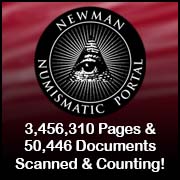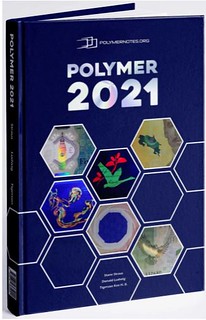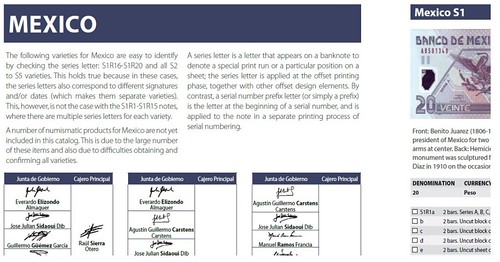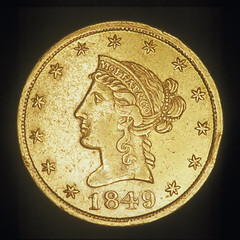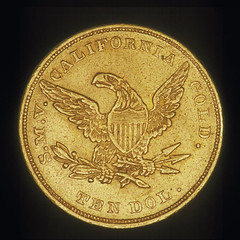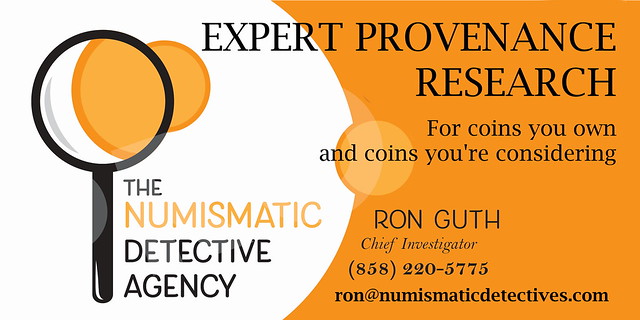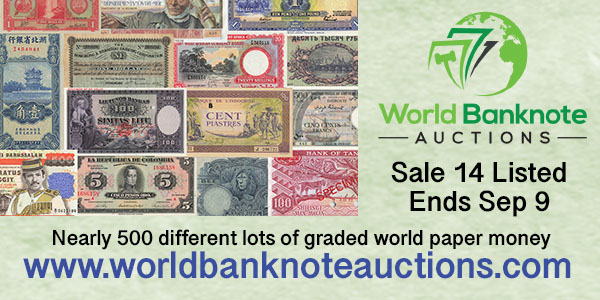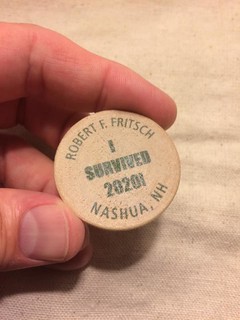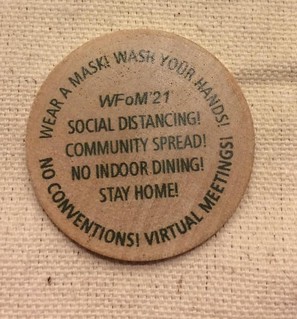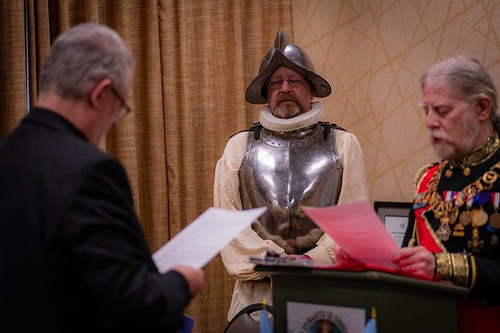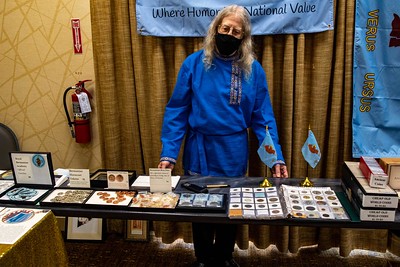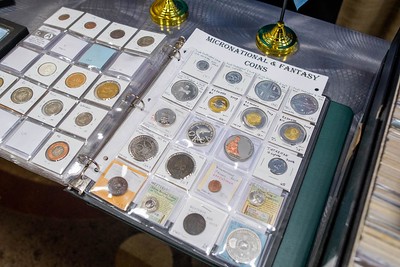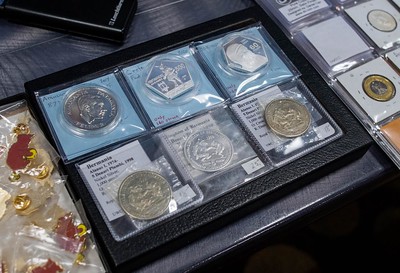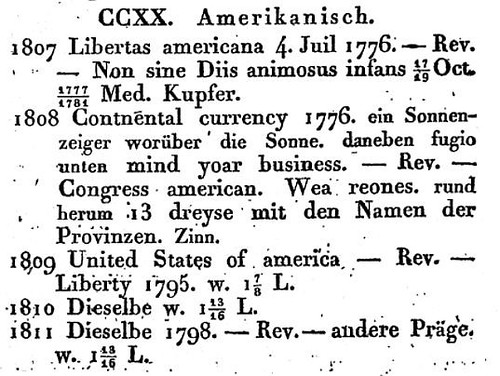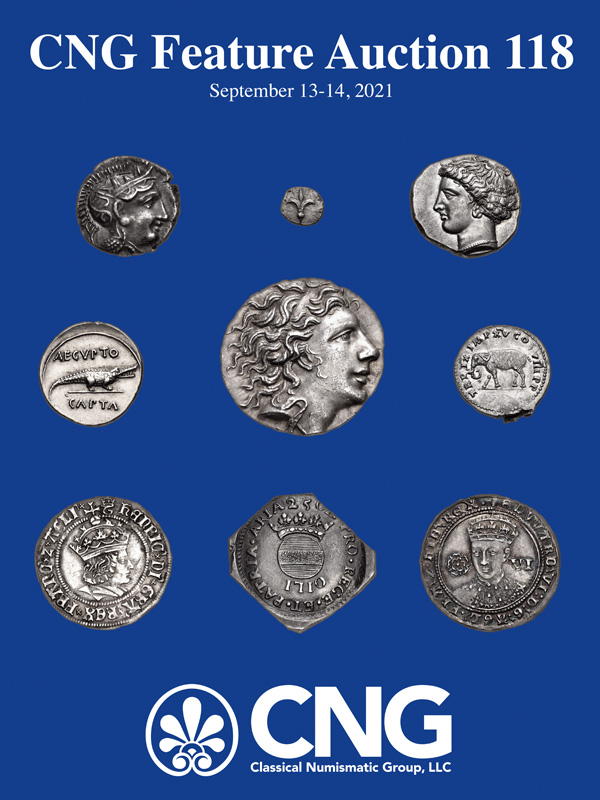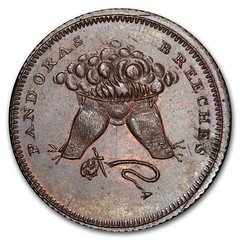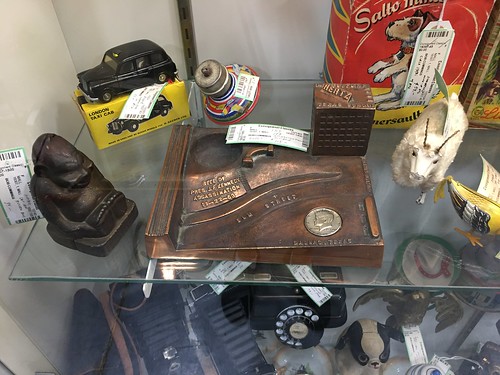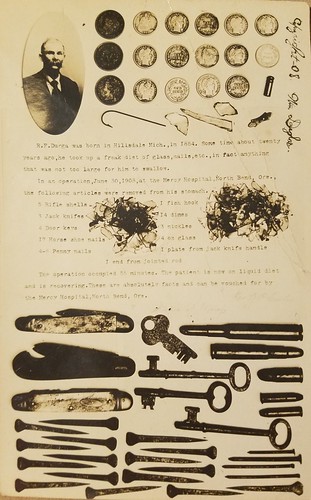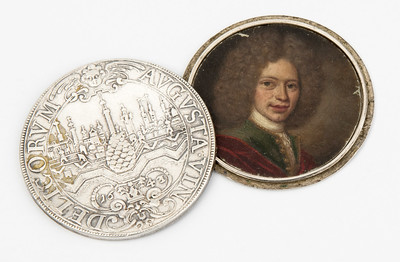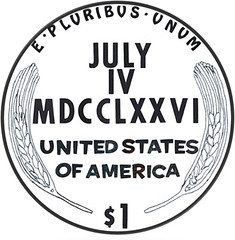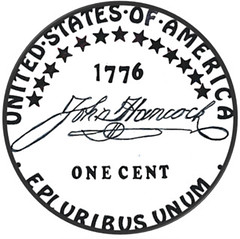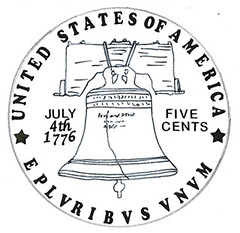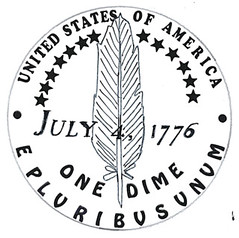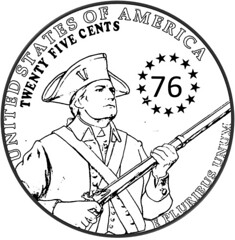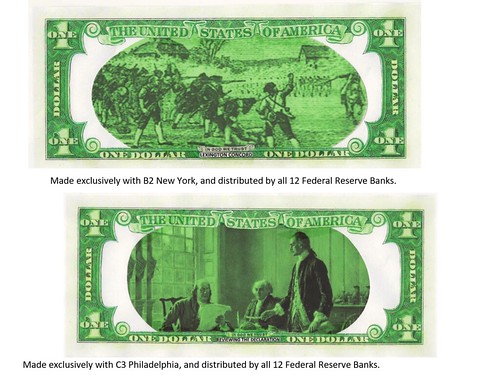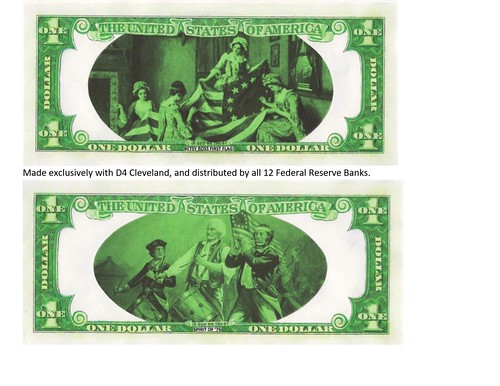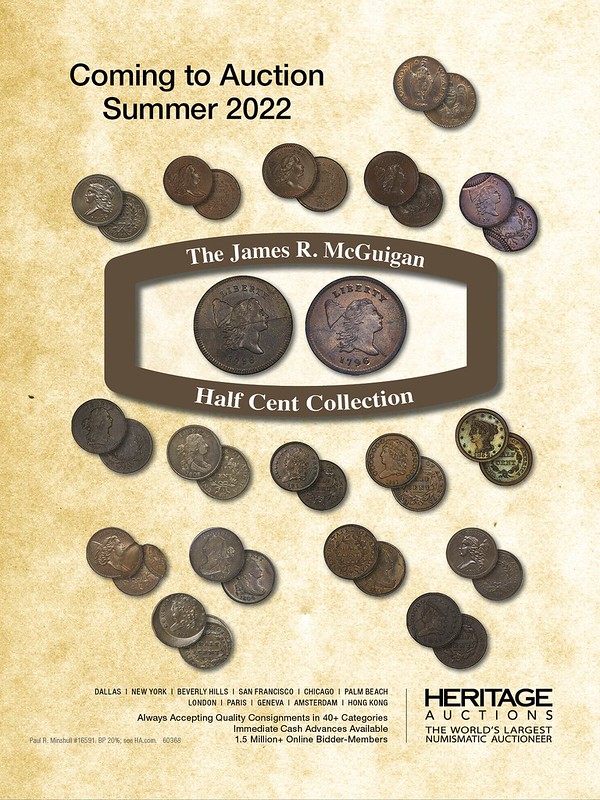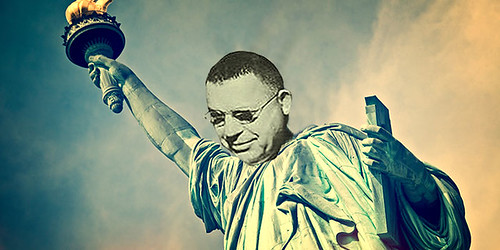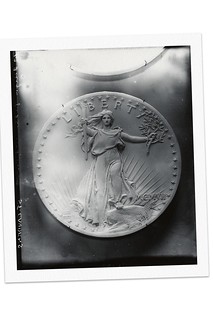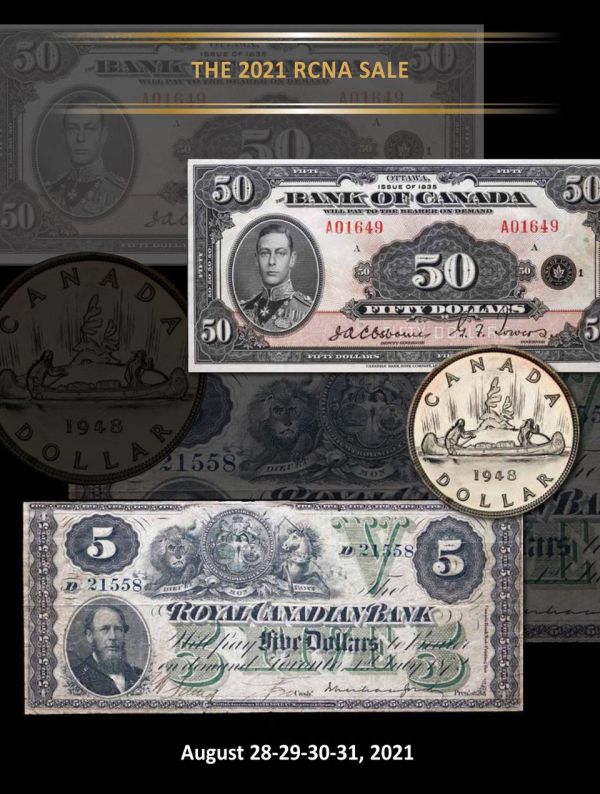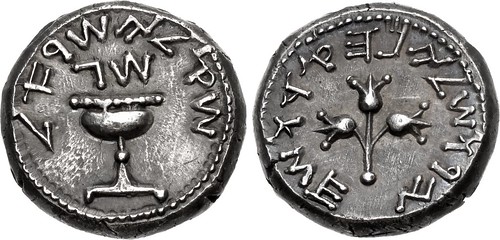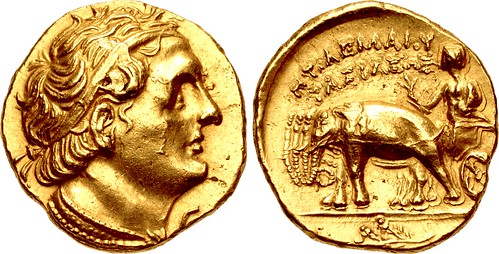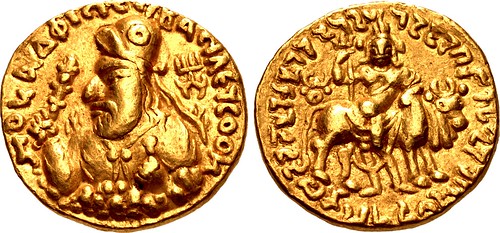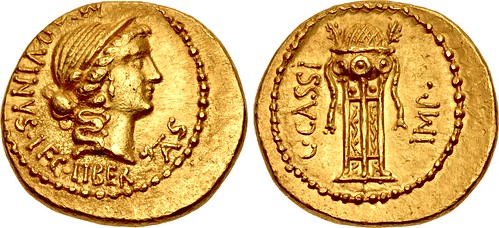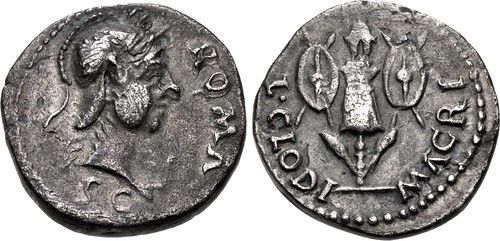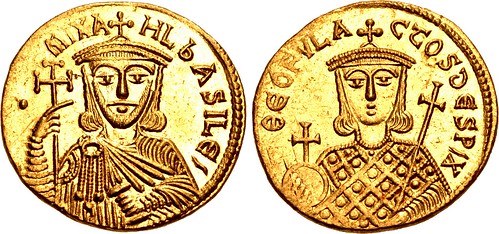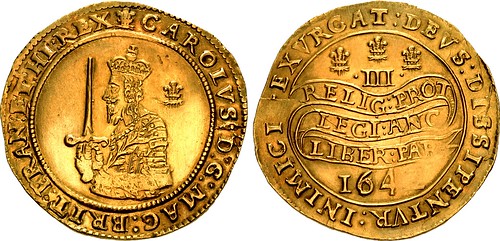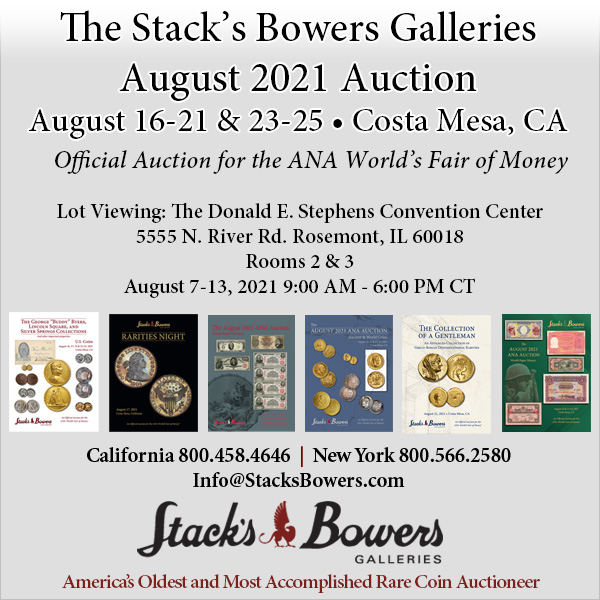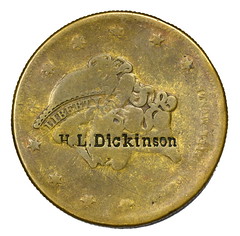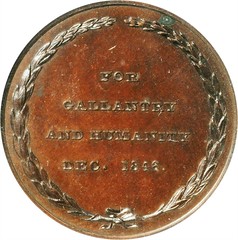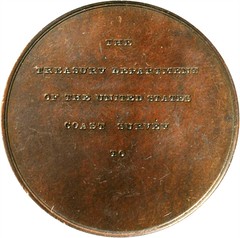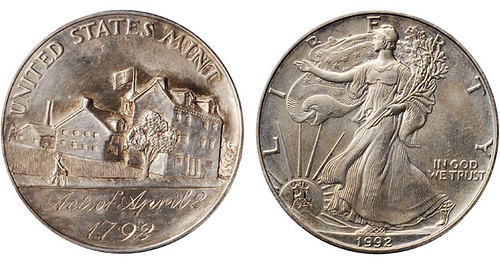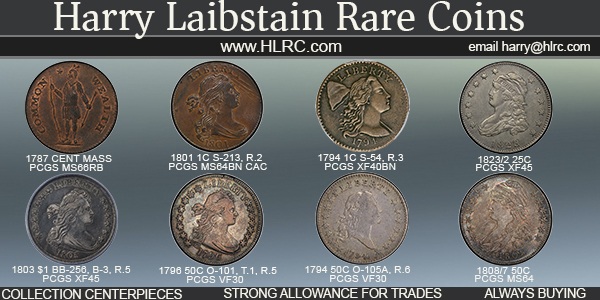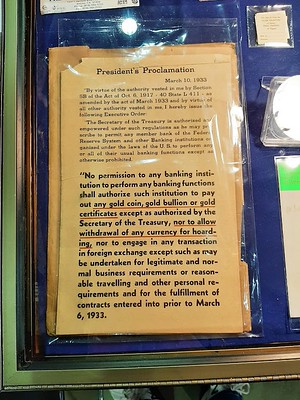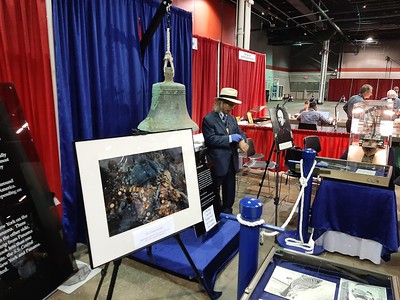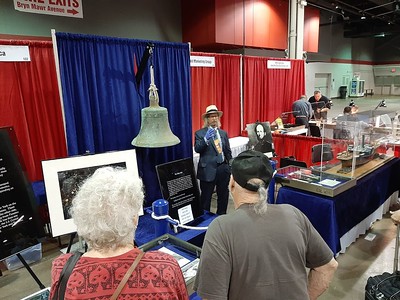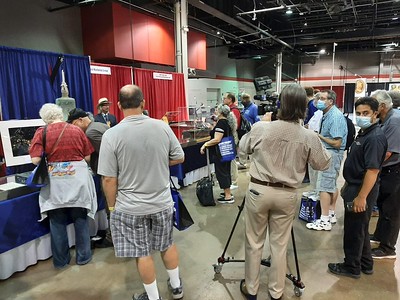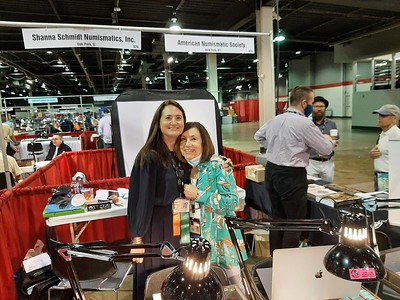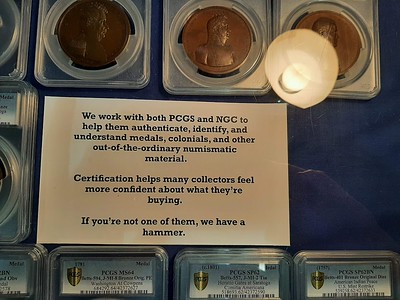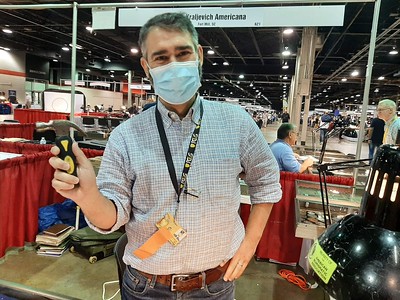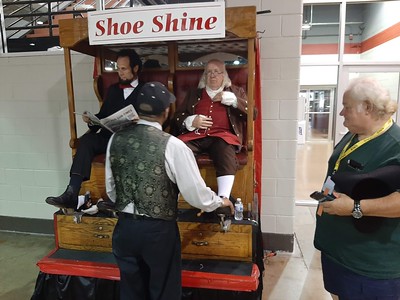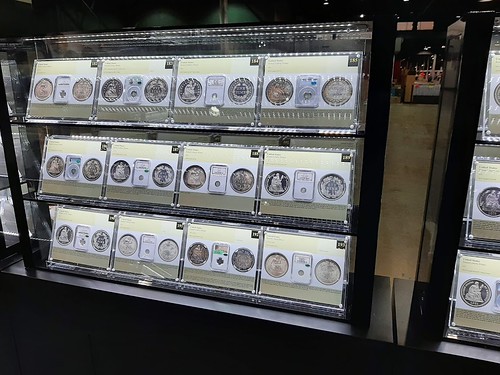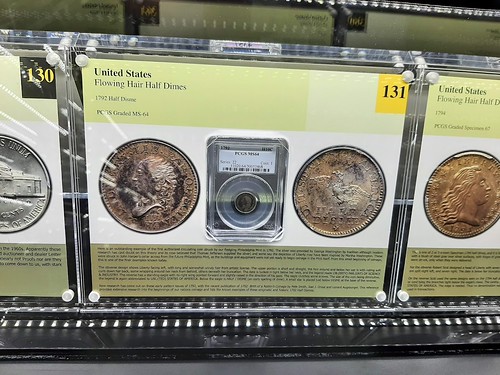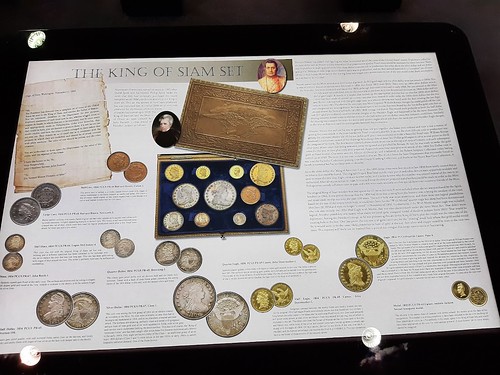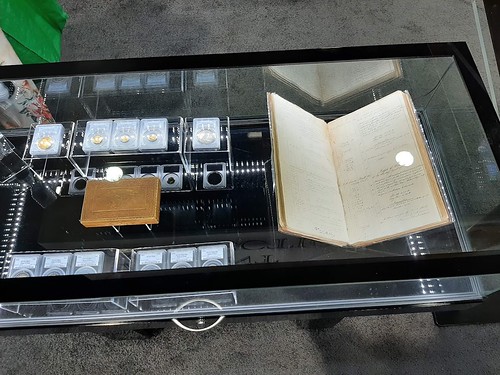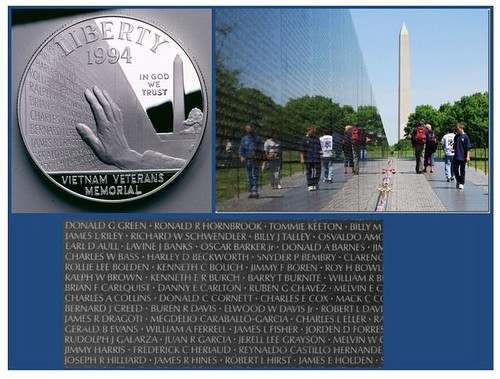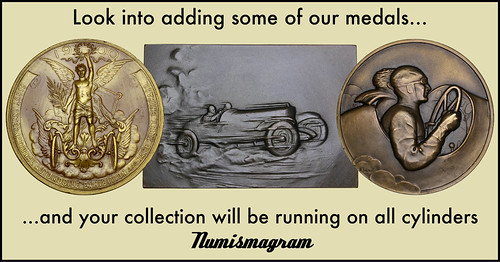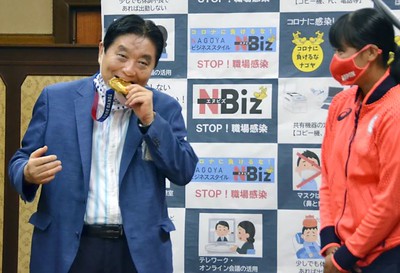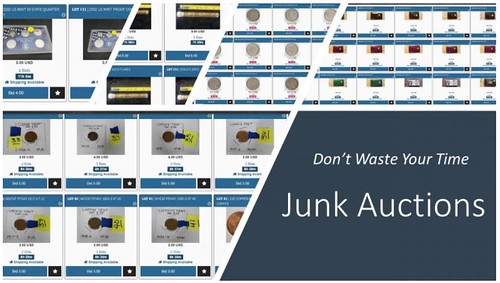
Visit our NBS Sponsors


|
The Numismatic Bibliomania Society is a non-profit association devoted to the study and enjoyment of numismatic literature. For more information please see our web site at coinbooks.org SubscriptionsThose wishing to become new E-Sylum subscribers (or wishing to Unsubscribe) can go to the following web page link MembershipThere is a membership application available on the web site Membership Application To join, print the application and return it with your check to the address printed on the application. Print/Digital membership is $40 to addresses in the U.S., and $60 elsewhere. A digital-only membership is available for $25. For those without web access, write to: Charles Heck, Treasurer AsylumFor Asylum mailing address changes and other membership questions, contact Chuck at this email address: treasurer@coinbooks.org SubmissionsTo submit items for publication in The E-Sylum, write to the Editor at this address: whomren@gmail.com BUY THE BOOK BEFORE THE COINSale CalendarWatch here for updates! /div> |
- WAYNE'S WORDS: THE E-SYLUM AUGUST 22, 2021
- NEW BOOK: "MUERA HUERTA" COINAGE
- NEW BOOK: POLYMER 2021
- CHASE MANHATTAN MONEY MUSEUM INVENTORY
- VIDEO: FUN SUMMER 2021
- JEAN AUTHOR JEFF ROCK RECEIVES NLG AWARDS
- 2021 ANA COVID SURVIVAL TOKEN
- MICROSUMMIT 2021 REPORT
- MORE EARLY CONTINENTAL DOLLAR MENTIONS
- MORE ON PANDORA'S BREECHES
- NOTES FROM E-SYLUM READERS: AUGUST 22, 2021
- STOMACH COIN FINDS
- TWO REMARKABLE SCHRAUBTALER ITEMS
- 2026 INDEPENDENCE COMMEMORATIVE IDEAS
- VOCABULARY TERM: FILLED DIE
- HIBLER AND KAPPEN
- JOHN J. PITTMAN'S
STATUE OF LIBERTY
BID - MORE ON MODEL HETTIE ANDERSON
- CLASSICAL NUMISMATIC GROUP AUCTION 118
- NUMISMATIC NUGGETS: AUGUST 22, 2021
- WAYNE'S AUGUST 2021 ANA DIARY, PART TWO
- WAYNE'S AUGUST 2021 ANA DIARY: TYRANT EXHIBIT
- VIKING COIN HOARD SEIZED
- 1994 VIETNAM VETERANS MEMORIAL DOLLAR
- COIN STRESS AT COIN LAUNDRIES
- JAPANESE MAYOR BITES OLYMPIAN'S GOLD MEDAL
- LOOSE CHANGE: AUGUST 22, 2021
- FEATURED WEB SITE: BUFFALO NICKEL CLUB
Click here to read the thin version on the web
Click here to subscribe
Click here to access the complete archive
To comment or submit articles, reply to whomren@gmail.com
Content presented in The E-Sylum is not necessarily researched or independently fact-checked, and views expressed do not necessarily represent those of the Numismatic Bibliomania Society.
WAYNE'S WORDS: THE E-SYLUM AUGUST 22, 2021
 New subscribers this week include:
Dr. Carlos Abel Amaya-Guerra, courtesy Adrián González-Salinas;
Niles Laughner, courtesy Jeff Daniher;
and
Wayne Pearson.
Welcome aboard! We now have 6,679 subscribers.
New subscribers this week include:
Dr. Carlos Abel Amaya-Guerra, courtesy Adrián González-Salinas;
Niles Laughner, courtesy Jeff Daniher;
and
Wayne Pearson.
Welcome aboard! We now have 6,679 subscribers.
Thank you for reading The E-Sylum. If you enjoy it, please send me the email addresses of friends you think may enjoy it as well and I'll send them a subscription. Contact me at whomren@gmail.com anytime regarding your subscription, or questions, comments or suggestions about our content.
This week we open with two new books, updates from the Newman Numismatic Portal, notes from E-Sylum readers, and more.
Other topics this week include early mentions of Continental Dollars, Pandora's Breeches, stomach coins, 2026 commemorative coin and paper money ideas, filled dies, Hibler and Kappen, John J. Pittman, Hettie Anderson, Hettie Green, auction previews, more ANA diaries, the Vietnam Veterans dollar, the coin shortage, and Buffalo nickels.
To learn more about "Muera Huerta" coinage, polymer banknotes, the Chase Manhattan Bank Money Museum collection, the Journal of Early American Numismatics, the summit of micronations, schraubtalers, Ye Olde Mint, the Tyrant Collection, and ancient coins in space, read on. Have a great week, everyone!
Wayne Homren
Editor, The E-Sylum
THE BOOK BAZARRE
NEW BOOK: "MUERA HUERTA" COINAGE
Adrián González-Salinas passed along this announcement of a new book on Mexican numismatics. Thank you! -Editor
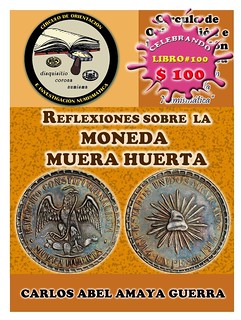 Book: Reflexiones sobre la Moneda Muera Huerta (Reflections on the "Muera Huerta" Coinage)
Book: Reflexiones sobre la Moneda Muera Huerta (Reflections on the "Muera Huerta" Coinage)
Author: Dr. Carlos Abel Amaya-Guerra
Year: 2021
Price: $100 Mexican Pesos (US$5°°)
Size (cms): 21.7 x (8.6") x 27.9 (11") x 0.9
Pages: vi, 78 (one page per sheet and including 3 color plates)
Index:
- Prólogo 1 by José Antonio Juárez-Muñoz (Durango Numismatic Society)
- Prólogo 2 by Ángel Smith (Numismatist)
- Introducción (Introduction)
- Agradecimientos (Acknowledgments)
- Capítulo 1 - La Idus de Marzo (The Ides of March)
- Capítulo 2 - Los Personajes y sus Circunstancias (The Characters and their Circumstances)
- Capítulo 3 - Historias y Leyendas (Stories and Legends)
- Capítulo 4 - Apreciando, Apreciamos a la Moneda (Appreciating, we appreciate the coin)
- Epílogo (Epilogue)
- Bibliografía (29 books/catalogs/publications)
- Anexos (Annex)
It is the 100th numismatic book published by Dr. Amaya-Guerra (he is the most prolific numismatic author in Mexico's numismatic history).
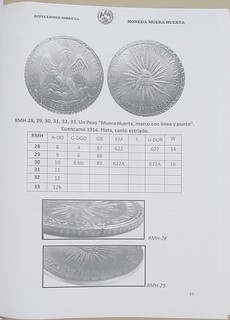 Few coins in the world have fascinated collectors like the one peso coin "Muera Huerta" (Death to Huerta) minted in Durango, Mexico
in 1914 during the Mexican Revolution.
The unusual legend desiring the death of the Mexican president Victoriano Huerta (1850-1916) has made this coin shrouded in many stories
and legends.
Few coins in the world have fascinated collectors like the one peso coin "Muera Huerta" (Death to Huerta) minted in Durango, Mexico
in 1914 during the Mexican Revolution.
The unusual legend desiring the death of the Mexican president Victoriano Huerta (1850-1916) has made this coin shrouded in many stories
and legends.
The author classifies 40 different "Death to Muerta" coins and using the following catalogues numbers per each piece: RMH (Reflexiones Muera Huerta), A (Carlo Amaya-Guerra), G (Carlos Gaytán), GB (Hugh Guthrie & Merrill Bothamley) KM (Krause-Mishler), S (Jesús Sánchez-Garza), U (Neil Utberg) and W (Howland Wood)
It is a very recommended book to all collectors of Mexican Revolution coinage.
Dr. Amaya-Guerra can be reached via email at numisamaya@hotmail.com . -Editor
NEW BOOK: POLYMER 2021
Here's the Google-translated text of an article from Geldscheine Online about a new book on polymer banknotes. -Editor
The wait is finally over! The world's most current, complete and comprehensive catalog of polymer banknotes has now been published.
- an updated format and expanded descriptions, including larger text for easier reading.
- a general introduction and general information about polymer banknotes, their history, types, variants, etc.
- 218 pages with detailed lists (and images) of all issued polymer banknotes issued and / or announced through July 2021.
- 64 pages with detailed lists (and illustrations) of all known / available numismatic products that were published and / or announced until July 2021.
- 54 pages with detailed lists (and illustrations) of test and advertising scores.
- Current Ratings.
- Hybrid banknotes are not included in the catalog.
Originally scheduled for release earlier this year: the delay is due to the pandemic, disease, the acquisition of the latest / most complete information and illustrations, and some work-related issues.
To read the complete article, see:
POLYMER 2021
(https://www.geldscheine-online.com/post/polymer-2021)
CHASE MANHATTAN MONEY MUSEUM INVENTORY
Newman Numismatic Portal Project Coordinator Len Augsburger provided the following report about an inventory of the Chase Manhattan Bank Money Museum collection. -Editor
The Chase Manhattan Bank Money Museum collection was formed in the early 20th century by Farran Zerbe, a president of the American Numismatic Association. The Chase bank acquired the collection from Zerbe in 1928 and most notably mounted an exhibit near Rockefeller Center, a mecca for tourists visiting New York City. Similar bank museums throughout the country were popular during this period of the 20th century, but over time their contribution to the bottom line was questioned by bank executives. The Chase Museum was closed in 1977 and much of the material was donated to the Smithsonian. Among the U.S. coins from the Chase collection, the Smithsonian acquired a high-grade 1794 dollar and an 1852 $50 gold slug.
Smithsonian curators Vladimir and Elvira Clain-Stefanelli were justly proud of the Chase acquisition, and wrote in an internal memo Its contents…were…highly coveted by the American Numismatic Society in New York, and by the American Numismatic Association, the powerful national organization of numismatists from Colorado Springs. The fact that we and not they were chosen as depository for this Collection increases our obligation to make the exhibit and the official presentation ceremony….a worthwhile event.
The American Numismatic Society was not completely left out, and received two important pieces from Chase, a Judd-13 eagle-on-globe 1792 pattern in white metal, and a class III 1804 dollar.
Images: 1849 Moffat $10, previously in the Chase Manhattan collection and today in the National Numismatic Collection
Link to Chase Manhattan Museum inventory on Newman Portal:
https://nnp.wustl.edu/library/archivedetail/539184
Link to Chase Manhattan pieces in the National Numismatic Collection:
https://americanhistory.si.edu/collections/search?return_all=1&edan_local=1&edan_q=1979.1263&
VIDEO: FUN SUMMER 2021
These are selections from the David Lisot Video Library that feature news and personalities from the world of coin collecting. David has been attending coin conventions since 1972 and began videotaping in 1985. The Newman Numismatic Portal now lists all David's videos on their website at:
https://nnp.wustl.edu/library/multimediadetail/522852
Here's one on the 2021 Summer FUN show. -Editor
FUN Summer 2021 Largest Ever for Florida United Numismatists.
VIDEO: 3:54.
 Cindy Wibker, Bourse Chairman,
Cindy Wibker, Bourse Chairman,
David Lisot, Interviewer, CoinTelevision.com.
July 9, 2021.
After being shut down by the Corona virus for more than a year and a half the Florida United Numismatists were able to hold a coin convention. The FUN Summer Coin Convention is the smaller of the two annual FUN coin shows but this one was the largest ever. Hear from bourse chairman Cindy Wibker as show describes what was involved putting on the show.
An excerpt of the video is available for viewing on the Coin Television YouTube Channel at:
https://youtu.be/ue5wCUIc4A8
JEAN AUTHOR JEFF ROCK RECEIVES NLG AWARDS
The ANS submitted this item congratulating author Jeff Rock on his two NLG awards for his exceptional article on Sarah Sophia Banks in the Journal of Early American Numismatics. We'd like to add our congratulations as well. -Editor
 In August 2021, JEAN contributor and editorial staff member Jeff Rock received two Numismatic Literary Guild Awards for his article
In August 2021, JEAN contributor and editorial staff member Jeff Rock received two Numismatic Literary Guild Awards for his article Collecting American Colonial Coins in Eighteenth-Century England,
which appeared in the June 2020 issue of JEAN. Jeff's article includes detailed information on the life and numismatic collection of Sarah Sophia Banks (1744-1818), along with images and descriptions of her American Colonial coin collection now split between the British Museum in London and the Royal Mint Museum in Llantrisant, Wales. Jeff's monograph was awarded the Best Article on Numismatic History and Personalities, and Article or Story of the Year. This latter award is exceptional as it covers every numismatic article (commercial, academic, large-, and small circulation).
This is the second year in a row in which a JEAN author has received these awards. In 2020, Q. David Bowers received Best Article on Numismatic History and Personalities for his John J. Ford: A Life in Three Portraits,
which appeared in the June 2019 issue. Also, in 2020 The Authentic Fugio Restrike Dies
by Christopher McDowell and Julia Casey was recognized by NLG as the Best Feature Article on Early American Coins and likewise received the top prize of the James L. Miller Memorial Award for Article or Story of the Year. If you are not a JEAN subscriber, you are missing out on these and other great articles.
Issues of JEAN normally run around 200 pages or more and contain articles on a variety of American Colonial numismatic topics.
 Subscribe to CNL:
http://numismatics.org/store/cnl/. $65 per year for ANS members and $85 for non-members. Contact Christopher R. McDowell, at
crmcdowell@strausstroy.com for additional information. JEAN has a zero-tolerance policy for plagiarism and will not publish articles that include items currently in (or currently being prepared for) commerce.
Subscribe to CNL:
http://numismatics.org/store/cnl/. $65 per year for ANS members and $85 for non-members. Contact Christopher R. McDowell, at
crmcdowell@strausstroy.com for additional information. JEAN has a zero-tolerance policy for plagiarism and will not publish articles that include items currently in (or currently being prepared for) commerce.
JEAN issues are thick, perfect bound, and fit nicely on a library bookshelf, where their groundbreaking articles can be consulted again and again. That's where I keep my issues. No library on American numismatics is complete without them. -Editor
To read earlier E-Sylum articles, see:
JOURNAL OF EARLY AMERICAN NUMISMATICS JUNE 2019
(https://www.coinbooks.org/v22/esylum_v22n22a05.html)
JOURNAL OF EARLY AMERICAN NUMISMATICS V2N2
(https://www.coinbooks.org/v22/esylum_v22n51a02.html)
JOURNAL OF EARLY AMERICAN NUMISMATICS JUNE 2020
(https://www.coinbooks.org/v23/esylum_v23n27a07.html)
2021 ANA COVID SURVIVAL TOKEN
Dennis Tucker posted these images on Facebook of a wooden nickel by Bob Fritsch warning about COVID at the 2021 ANA World's Fair of Money. -Editor
Shortly after the show the ANA published this press release. -Editor
First, we wish to sincerely thank our members and member-dealers for helping to make the Chicago World's Fair of Money® the most exciting numismatic event of the year. This could not have happened without your collective support and participation.
Thousands of attendees, hundreds of dealers, incredible auction lots, informative presentations and awe-inspiring exhibits made this show one to remember. Of course, it was the camaraderie and ability to gather in-person that made the show especially exhilarating.
Unfortunately, several dealers have notified the ANA that they have tested positive for COVID-19 since returning from the show. Although protective measures were in place, the potential for exposure is always a possibility when one leaves home. The ANA is unaware of when, where or how the dealers contracted the virus. (Due to privacy issues, we are unable to provide the names of the infected dealers.)
If you feel ill or are displaying any COVID symptoms, consider quarantining for 10 days and/or getting a COVID test.
To read the complete Facebook post, see:
survival="" token="" courtesy="" of="" bob="" fritsch.="" <="" a="">
(https://www.facebook.com/dennis.tucker.503/posts/4276534399048818)
MICROSUMMIT 2021 REPORT
Allen Berman, a.k.a. King Alanus of Bermania submitted this report on the recent summit of micronations. Thank you! The first image shows King Alanus of Bermania in formal uniform, including ANA convention medals. -Editor
 At a hotel in Las Vegas in July Immanuel X, King of Ourania (known better to numismatists as Edessa), graciously greeted His Excellency the Governor General of British West Florida. King Immanuel had earlier been appointed ambassador to the US by a claimant to the Empire of Manchukuo, a descendent of the last Chinese Emperor, Henry Pu Yi. Later King Alanus of Bermania was seen enwrapped in a presentation by King Boleslaw II of Wojcikslavia on the constitutional implications of the Congress of Vienna on the current status of the Kingdom of Poland. What could prompt this almost surreal scene? MicroSummit 2021 of course. This event drew together Kings, Presidents, and Dukes representing various micronations from throughout the US and Canada, and it has for more than a decade.
At a hotel in Las Vegas in July Immanuel X, King of Ourania (known better to numismatists as Edessa), graciously greeted His Excellency the Governor General of British West Florida. King Immanuel had earlier been appointed ambassador to the US by a claimant to the Empire of Manchukuo, a descendent of the last Chinese Emperor, Henry Pu Yi. Later King Alanus of Bermania was seen enwrapped in a presentation by King Boleslaw II of Wojcikslavia on the constitutional implications of the Congress of Vienna on the current status of the Kingdom of Poland. What could prompt this almost surreal scene? MicroSummit 2021 of course. This event drew together Kings, Presidents, and Dukes representing various micronations from throughout the US and Canada, and it has for more than a decade.
What is a micronation? While there is no universally accepted definition, most could be described as a spirit or an ideal configured in the context of a more or less mythical or hypothetical country. Some make serious political pretentions, others less so. Some even have undisputed territory
such as the famous Sealand. One can usually observe that when micronational heads of state gather there is generally more harmony and joviality than meetings of their more mundane counterparts.
This particular celebration of creativity began with solemn ceremonies of the Kingdom of Bermania, familiar to many E-Sylum readers. Carefully painted and wax-sealed grants of arms were presented to Chess Grandmaster Stan Vaughan confirming his title as King of Ourania. Another grant was presented to futurist John Michael Godier. The latter, famous for his interviews with experts in astronomy and space exploration, hosts the Youtube show Event Horizon
(www.youtube.com/eventhorizonshow).
Amid the flags nestled together on the dais was that of the Burgravine of Munich, known to numismatists as Ursula Kampmann, owner of the popular numismatic blog CoinsWeekly
(coinsweekly.com).
While many technical speeches were delivered dealing with international treaties and sovereignty, the attendees also enjoyed lighter ones, such as The Wolf of Dubbio,
delivered by King Alanus I, known to numismatists as world and ancient coin dealer Allen G Berman. The story is an excerpt from his recent book of humorous stories, Please Ignore Our Time Machine. This work was recognized with an award for contribution to micronational literature at the conclusion of the conference.
Of course a great many examples of micronational and fantasy coins and paper money were in evidence. The event provided a rare opportunity for collectors to acquire coins with under 100 mintages for not much more than a few dollars. Some of these rare examples were struck to represent the coins used in works of literature such as Lord of the Rings and Game of Thrones.
And of course there was free money. All stalwart representatives who participated until the official breakdown of exhibits on Sunday morning were presented with banknotes of the Kingdom of Volletnia by Her Majesty Queen Loraine II.
Why are numismatists attracted to coins from countries which do not exist? Perhaps it is the creativity and liberty used in designing them, a freer process than used by conventional governments.
Perhaps it is the same sense of adventure that brings them to be arm chair historians, exploring kingdoms from ancient Judaea to medieval England and beyond. No matter how one analyzes it, coins struck by fantasy nations and pretenders have been fascinating numismatists at least since the early 1800s. The late Colin R. Bruce II helped define the field by writing Unusual World Coins, published in six editions by Krause Publications. So many fantasy coins are in the hands of collectors these days, and more are being struck every year. Perhaps it may be time for a seventh edition.
To read the earlier E-Sylum articles, see:
NEW BOOK: PLEASE IGNORE OUR TIME MACHINE
(https://www.coinbooks.org/v23/esylum_v23n13a03.html)
BOOK REVIEW: PLEASE IGNORE OUR TIME MACHINE
(https://www.coinbooks.org/v23/esylum_v23n28a07.html)
MORE EARLY CONTINENTAL DOLLAR MENTIONS
Julia Casey submitted these additional notes on early references to Continental Dollars. Thanks! -Editor
More Early German Numismatic References to Continental Dollar Coins (...or Medals)
I have continued to see what I can find searching available internet resources for early mentions of Continental dollars. I have uncovered two additional references. The first is from 1811.
A Continental dollar is described (this is a rough Google translation):
He owns it but has not found it anywhere. It is probably just a sample stamp that has never been minted because it is made of tin, but for those who love coins it will be all the more in the middle of the main page in three lines WE ARE ONE in a circular line between this and another circular line which throws short rays from between stands around CONGRESS AMERICAN This all is made of a chain consisting of 13 links on each of which one runs the name of a province of the American Free State. The inscription on the back is called CONTINENTAL CURRENCY The sun shines on a sundial by the sun, FUGIO stands on the sundial MIND YOUR BUSINESS completely unnoticed between the inscription 1776
This past March I contacted Ralf Böpple about this publication and he kindly provided the following information:
The article is a review of a numismatic book published in 1811 which was meant as a general numismatic reference for collectors, numismatists and businessmen. While the reviewer attests it great overall completeness and thus usefulness, he corrects or augments some of the entries. One of these is the section on Dollar
, where he adds:
On the occasion of the word Dollar p. 128 sq., the reviewer would only like to mention a third type of dollar which he personally owns and has not seen to be catalogued anywhere yet. Most likely it is just a pattern which has never been coined, because it is made of tin, but numismatists will therefore find it even more interesting.
He then continues with a detailed description of what indeed is a Continental dollar.
The reviewer signs with Wa.
. I did not find any clues who this might have been, as there generally was no list of contributors to this type of literature journals. By the many numismatic details that the reviewer provides, and the little I know about the Jenaische Allgemeine Literatur-Zeitung, I would assume that he was a professor, most likely of the Jena university, well versed in general numismatics.
To read the complete article, see:
https://books.google.com/books?id=MaBVpA4FCPcC&pg=RA1-PA339&dq=
%22mind+your+business%22+zinn+dollar&hl=en&newbks=1
&newbks_redir=0&sa=X&ved
=2ahUKEwir4InsvcHvAhVGB50JHeygDigQ6AEwAnoECAEQAg#v
=onepage&q=%22mind%20your%20business%22%20zinn%20dollar&f=false
The next reference is an auction catalog from Munster in 1824. It is said to be the collection of Vice Chancellor and Privy Councilor JJ von und zur Mühlen.
I attempted to research this man and this best candidate I have found is Johann Ignatz von und zur Mühlen (1735-1809). Is so, this would place this Continental dollar in Germany prior to 1809.
To read the complete article, see:
https://books.google.com/books?id=TLjoy6l9J_gC&pg=PA205&dq
=zinn+munzen+1776&hl=en&newbks=1&newbks_redir=0&sa=X&ved
=2ahUKEwiK-6v1tp3yAhWCB50JHahlDvg4ChDoATAHegQIAxAC#v=onepage&q&f=false
On this site can be found an image of the bookplate of Johann Ignatz von und zur Mühlen where he is described as:
a lawyer, councilor, vice-chancellor and archivist in the bishopric of Münster
To visit the site, see:
http://augustiner.de/de/engagement/forschung/augustinerbibliothek-muennerstadt/
exlibrissammlung/index.html
Thanks, Julia. And Bless all those involved with digitizing books and periodicals all around the world. This opens many new doors for researchers, and new discoveries like these are coming at a faster pace. -Editor
To read the earlier E-Sylum articles, see:
CONTINENTAL DOLLAR OFFERED FOR SALE IN 1785
(https://www.coinbooks.org/v24/esylum_v24n12a10.html)
MORE ON THE 1785 CONTINENTAL DOLLAR SALE
(https://www.coinbooks.org/v24/esylum_v24n13a08.html)
MORE ON PANDORA'S BREECHES
Last week we discussed the symbolism of "Pandora's Breeches", an image on one of the "Three Thomas's" Middlesex token. Thanks again to Ray Williams for suggesting the topic. -Editor
Peter Jones writes:
"Just a comment about the three Thomases. All three, (Thomas Spence, Sir Thomas More, and Thomas Paine), were prosecuted by the British government for their writings.
"The stuffed woolen breeches, as far as I understand, were found in the House of Commons in 1792, trying to set the House on fire. They called them Pandora's breeches because all the ills in life (including the American Revolution) came from a Pandora's box."
Thanks. Peter also passed along an excerpt on the topic from his 2020 book, Colonial History in Your Hands .
Next up are some notes from Ron Haller-Williams. Thanks. -Editor
The book you mention must be Patricia Fara's "Pandora's Breeches: Women, Science & Power in the Enlightenment".
"Pandora in breeches is an abomination. Pandora is already a problem: the first woman, in Greek mythology, whose existence brings all sorts of problems to the (male) world. But Pandora in breeches means that Pandora is also trying to take over the male world. ..."
The author certainly seems familiar enough with the [series of] tokens - and the background. Ray Williams' query ("What is the symbolism for the pants on the reverse?") is answered in the Prologue:
"Had Guy Fawkes struck again? When smoke billowed through the lobby of the House of Commons on 9 May 1792, some smouldering breeches stuffed with straw were found crammed above a lavatory ceiling. Suspicion immediately fell on Thomas Paine, the well-known revolutionary who had just completed his (metaphorically) incendiary Rights of Man. 'Guy Vaux' caricatures sneered at Paine's calls for equality, ..."
"Pandora's breeches were a powerful symbol because the notion of a woman wearing trousers was outrageously funny, yet also frighteningly possible. The same year, the writer Mary Wollstonecraft published her own inflammatory book with a similar title to Paine's: A Vindication of the Rights of Woman, ..."
P.S. This little lot was news to me, but I've now ordered the book, which I'm sure will be at least as interesting to my (non-numismatic) wife as it will be to me.
Thanks, everyone. -Editor
To read the earlier E-Sylum articles, see:
NEW BOOK: COLONIAL HISTORY IN YOUR HANDS
(https://www.coinbooks.org/v23/esylum_v23n30a03.html)
QUERY: PANDORA'S BREECHES
(https://www.coinbooks.org/v24/esylum_v24n33a12.html)
NOTES FROM E-SYLUM READERS: AUGUST 22, 2021
Hetty Green, Books from Budapest
Dave Hirt writes:
"I watched the video on Hetty Green. I have the book, Witch of Wall Street, by Boyden Sparks, the 1935 edition in my library. She was a very interesting person, living when she did in a man's world. She bested many of the best of them in financial deals. She was really not a bad person. She was just a miser who hated to spend money. She probably got that from her father, who once refused a gift of a 10 cent cigar, saying that he was perfectly happy with the 4 cent ones that he smoked, and didn't want to get used to something better. If Hetty was on the street, and saw you fall, she would be the first to help you up, as long it did not involve spending money.
"Hetty did buy her son Ned a railroad in Texas. This was his private toy. He loved to drive the engines. He got the title Colonel because of the railroad. I don't believe that Col. Ned got the money that he used to build his massive coin collection until after Hetty's death.
"Sorry that I missed the ANA show, but I went east instead of west."
Dave and his wife Emi often travel to Budapest. -Editor
Dave writes:
"Greetings from Budapest. We have been here since July 27. I have two coin club meetings with my friend Balazs. Of course I have bought some books, two of them I will mention. One is on emergency money, every page full of color illustrations, 1723-1959. Money needed during times of war and upheaval. The other is of coins in the Hungarian national museum, a beautiful book which includes California gold coins including a $50 round coin gifted to them by Wass & Molitor., Hungarian assayers in San Francisco."
To read the earlier E-Sylum articles, see:
HUNGARIAN NATIONAL MUSEUM SAMUEL WASS COINS
(https://www.coinbooks.org/v22/esylum_v22n05a16.html)
HUNGARIAN MUSEUM WASS, MOLITOR EXHIBIT
(https://www.coinbooks.org/v22/esylum_v22n13a12.html)
NOTES FROM E-SYLUM READERS: AUGUST 15, 2021 : Hetty Green's Greenbacks
(https://www.coinbooks.org/v24/esylum_v24n33a13.html)
Kennedy Half Dollar Kitsch
Ron Guth writes:
"I came across this unusual piece today in an antique mall here in San Diego. It's a Kennedy Assassination memorial complete with a 3-D rendering of the Texas School Book Depository, the grassy knoll, and Elm Street. A polished 1964 Kennedy Half Dollar provides the numismatic tie-in. Worth $115?"
Wow. I can't say I've ever seen THAT before. I would think they could find a buyer based on the kitsch factor alone. -Editor
STOMACH COIN FINDS
In the please-don't-eat-stuff-that-isn't-food department, Carol Bastable sent this fascinating postcard with a photo of coins and other objects found in a man's stomach. -Editor
It is a 1908 postcard about a man that most likely had a condition known as pica. People with pica eat non food items. Less harmful materials might include the consumption of dirt or paper but there are more severe instances where people consume metal and even glass as this person did. Of numismatic note are the 14 dimes (one being Canadian) and three nickels that were surgically removed from this man's stomach. This is a poor example of how to start a coin collection.
Contributing factors for pica can include nutritional deficiencies, stress, cultural influences, and even pregnancy. In 1908 this was probably a little known condition. At the very end of the text on the postcard, it is stated that Mercy Hospital in North Bend, Oregon can vouch for it. The maker of this postcard knew how incredulous this story would sound.
It was estimated that this man began consuming these items about twenty years before the surgery. Most of the dimes are Barber dimes. Of course the coins have dates on them but there is no guarantee that they were swallowed the same year that they were minted.
Two things come to mind.
1. It sounds like something for Ripley's Believe It or Not. However, Ripley did not begin his work until December 1918.
2. This is a good example of why we now have HIPAA laws to protect patient privacy.
Carol adds:
"I see that all the reverse images are S mintmarks. That makes sense since the hospital was in Oregon and his home must have been in range of that hospital."
To read the complete lot description, see:
1908 Michigan RPPC Photo Postcard Articles Removed from Stomach of R.F. DURGA
(https://www.ebay.com/itm/1908-Michigan-RPPC-Photo-Postcard-Articles-Removed-from-Stomach-of-R-F-DURGA-/144135737564)
TWO REMARKABLE SCHRAUBTALER ITEMS
Gil Parsons submitted this write-up of two interesting items in his stock relating to Schraubtalers, or "screw coins", in which the two halves can be screwed apart to reveal items hidden within, such as engraved portraits. Thanks! -Editor
Schraubtaler (literally screw-thaler
) refers to a numismatic genre in which two halves of a coin or medal are separated, hollowed out, filled with content of artistic or other significance, and rejoined with a threaded connection to reconstitute the appearance of the original. {Actual technique involved the manipulation of two coins reassembled into a unified whole) A related genre Steckmedaille
relied upon a simple plug connection and was thus easier to make and thus more widely circulated. Schraubtaler coins evolved in the sixteenth century, with a heyday of production in the seventeenth and eighteenth century. Examples of the technique continued to appear well into the twentieth century, with World War I propaganda a favored theme.
The coins were filled with painted portraits or scenes, engravings on paper, often presented as a series of images, or occasionally images were engraved on the inner surfaces of the coin itself (as for example in a 1639 piece depicting Swedish king Gustavus Adolphus and his wife.)
Content ranged from the political to betrothal portraits and, most especially religious imagery.
Not infrequently the coins were exported empty, and could be used for personal messages or even espionage. Alas, the emptiness of most examples seen today is a reflection of the fragility and ephemeral nature of the content. (One notes especially in this context a subgenre known as Glimmerbildschen, in which images were painted on thin slivers of mica.)
Seventeenth century Schraubtaler are found from many sources (A 1634 Polish crown of Zygmunt III Vasa with fourteen miniatures inside and an ecus of Louis XIV of 1664 from Bayonne with holy pictures within might serve as examples) but the vast majority of pieces stem from Augsburg, which had both a lengthy tradition of fine metalwork and a concentration of Imperial wealth and power, together with a staunch Protestant tradition which fueled much of the iconography of religious items. The standard reference for the genre: Pressler, Ernst Schraubtaler und Steckmedaillen, 2000, lists a vast number of examples of this numismatic tradition which expressly served aristocratic taste and the whims of the wealthy.
1) A BEAUTIFUL SURVIVAL, OF GREAT ASSOCIATION INTEREST
An Augsburg Schraubtaler of 1643, based upon a thaler of Emperor Ferdinand III [Holy Roman Emperor 1637-1657) (Davenport. 5039 , this type of thaler issued 1639-1645) Half-length portrait of the Emperor, armored, on recto. Legend: Imp: Caes: Ferd: III P.E. Ger: Hun:Boh: Rex. On verso: traditional pine cone symbol of Augsburg in front of Augsburg city view (Augusta Vindelicorum). Mint mark three hooves
and winged angel above. Silver, 40mm (18grams), in box Within: an oil portrait of H[an]s Cas[par] Escher [vom Glas]. 1625-1696 (became Mayor of Zurich 1691). On verso of portrait, Escher's data and titles Schraubtaler in excellent condition, far better than usually seen.
Hans Caspar Escher was the ancestor of famed financier Alfred Escher, founder of Credit Suisse and ETH Zurich $1850.
PICTURE CYCLE OF LIFE OF LUTHER AND EVENTS OF THE REFORMATION FOR A SCHRAUBTALER
Remshard, Abraham and Rogg, Gottfried Erster Bilder-zyklus zum
Konfessionsjubilaeum Augsburg, 1730 (1735) Broadside engraving;
roundels of Luther and the Reformation ( a common subject for
Schraubtaler,) supplemented by portraits (of the Kurfurst von Sachsen and Langrave Phillip of Hesse) and views (of Augsburg and Pfalz) Entire piece is presented in a mise en page comprising elaborate engraved decoration and surmounted by angels On the verso: Ein Gedenkblatt zum Konfessions Jubilaeum
30 x 21.5 cm Roundels 3.5cm Marsch 69/119 Exceptional condition $1250.
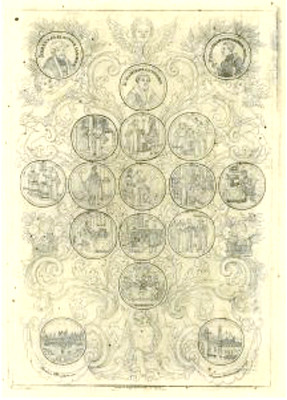 In June of 1530, the Emperor Charles V convened the Diet of Augsburg, with the intention of achieving a reconciliation of the conflicting religious positions which were then fragmenting the Empire. Elector John of Saxony directed Martin Luther, Justus Jonas, Johannes Bugenhagen, and Philipp Melanchthon to draft a comprehensive statement of the Protestant position, which document, issued in German and Latin, came to be known as the Augsburg Confession, and stands as the primary confession of faith
of the Lutheran religion.
In June of 1530, the Emperor Charles V convened the Diet of Augsburg, with the intention of achieving a reconciliation of the conflicting religious positions which were then fragmenting the Empire. Elector John of Saxony directed Martin Luther, Justus Jonas, Johannes Bugenhagen, and Philipp Melanchthon to draft a comprehensive statement of the Protestant position, which document, issued in German and Latin, came to be known as the Augsburg Confession, and stands as the primary confession of faith
of the Lutheran religion.
The text comprised twenty-one theses (positive statements of articles of Protestant faith) and seven antitheses (objections to Catholic doctrine and practice). Melanchthon edited and published the first edition of the Confession, which text was translated into English in 1536, becoming the basis for the 39 Articles of the Anglican Church.
The Augsburg Confession and its anniversaries provided grist for a rich graphic and numismatic tradition, which tradition endures to the present day. One need only cite the splendid engraving by Wenceslaus Hollar of 1630, in commemoration of the first centenary, the medals by Christian Muller and Daniel Dockler for the bicentennial together with the Lubeck thaler of the same date, and the work of Karl Goetz of 1930, the 400th Anniversary. [Passing mention might be given to the wonderful medal of 1730 by Peter Paul Weiner which depicts one of the great moments of oratory: Christian Beyer reading the German text of the Augsburg confession to Charles V, much to the profound annoyance of the Emperor—Beyer's recitation was so bold and loud that it could be heard distinctly by the huge crowd assembled outside!] An estimable monograph and guidebook for collectors is: Angelika Marsch Bilder zur Augsburger Konfession und ihren Jubilaen of 1980 and one may also usefully refer to the Medallic Collection of the Lutheran School of Theology at Chicago.
[For atmosphere to augment one's contemplation, one might listen to the
Mendelsohn Fifth Symphony, the Reformation
, originally composed to
commemorate the 300 th anniversary of the Augsburg Confession in 1830.]
The piece at hand belongs to the extensive and varied work for the Bicentennial of the Augsburg Confession. Abraham Remshard (1680-1754) of Augsburg styled himself as Silberdrechsler
, a maker of medallic boxes, and produced this series of roundels expressly for insertion in Schraubtaler. Marsch provides illustrations of how the roundels would be assembled and joined into an album. Gottfried Rogg, himself known as an artist of historical and memorial pieces, re-engraved the series for the splendid graphic here at hand, following closely the model set by Hollar a century before. Two other series by Remshard are known to exist: one of missionary interest and the other, of 1732, for which he is best known and avidly collected, memorializes the Expulsion of the Salzburg Protestants. This latter series, of 22 images, does not technically fit into a Scraubtaler, and is often termed a Box-thaler,
although this term is no longer in common usage.
The original Schraubtaler series is virtually unobtainable, so many having perished. This dramatic and handsome broadside graphic is itself scarce, and has not appeared on the market for several years.
Some further books for reference:
Klaus-Peter Brozatus Reformatio in Nummis, Osnabruck: Kunkel, 2015
Hugo Schnell Martin Luther und die Reformation auf Munzen und Medaillen
Munchen: Kinckhardt and Bierman, 1983 Also his Catalogue of the Robert B,
Whiting Collection, 1983
2026 INDEPENDENCE COMMEMORATIVE IDEAS
Reader Wayne Pearson submitted these thoughts on coins and paper money to mark the 2026 semiquincentennial of U.S. independence. Thanks. I'm sure the Mint will get commemorative coin designs rolling soon if they haven't already. Commemorative banknotes have not been a thing in the U.S., mostly due to the long lead time needed for security measures. Worth thinking about, though. -Editor
I want to share a few ideas with your readers. To start with, new coins and paper money for the semiquincentennial. We need to get the ball rolling now. For the six coins I enclosed designs I would really like to see.
The dime and quarter are based on non-circulating commemoratives.
The dollar is based on the Wheat cent and the tablet the Statue of Liberty is carrying.
The half dollar is a heptagon shape so we could make them 27.5 mm like the U.K. so the vending machine industry could accept them.
Here is the idea for paper money. There will be 13 different $1.00 bills. Here's how it would work.
In addition to the regular issue dollar, there would be 12 designs one per month with one of the 12 federal reserve district banks letter and number. For example, the first bill will be issued in January to be issued to all 12 banks (and branches). January will be A 1.
Each of the fed banks will issue it. In February, the second design would be issued with a B 2, and so on until December when the L-12 San Francisco. And so there is no counterfeiting going on with people trying to slip in their own novelty versions, the real bills need 3 implementations. 1st, micro printing. 2nd a watermark, and 3rd, the 1990's plastic strip. I am also toying with a Harriet Tubman $25.
I also am working on a seven year program for our coins introducing designs of Liberty in addition to the six principals.
For example, year one would have the Lincoln cent using the 1952 James Fraser design with liberty designs on the other coins. Years two the Washington Quarter plus liberty designs on the other coins. Years 3,4,5 and 6 Jefferson, FDR, JFK and Sacagawea. Years 7 all 6 principals would be together. Year 8 would start the program over with Lincoln.
Many liberty designs that have been overlooked are the designs I'd like to see. But for now I want to share my 2026 ideas.
It's never too early to start preparing to commemorate a major anniversary. I doubt any paper money changes would fly, but perhaps we could get an upgrade to one of them. Coins seem more ripe for change. What do readers think? What does the Mint already have in mind, if anything? -Editor
VOCABULARY TERM: FILLED DIE
Here's another entry from Dick Johnson's Encyclopedia of Coin and Medal Terminology. -Editor
Filled Die. A striking error from a coining die during a long press run in which loose particles of metal or other debris have lodged in a design cavity and partially or completely eliminated a design element, a letter or figure, from all succeeding pieces struck from that die. The cavity sometimes fills by stages and only a part of the design element is struck up, as only the base of a letter, until, perhaps, even it too will disappear on subsequent strikes.
The particles which lodge in the die cavity can come from several sources. Most common is the debris adhering to the succession of blanks carried into coining position which wedge into a die cavity. Or it might be a diechip – a tiny piece of a die – broken off in one place and lodged in another, or on another die.
In modern presswork this problem can easily be eliminated by blowing compressed air over blanks and dies before striking occurs.
A filled die is similar to a broken projection of some height in a die. The center of an O or D – or the loops in A, R, P or figures 6, 8, 9 – may break off in a long press run due to metal stress. Such a filled die variety could have been eliminated by the champs levée process. When these varieties are described, they are often called broken, as 1922-D Lincoln cent broken D.
Missing letters and other design elements are often attributed to filled dies, but can also be caused by heavy die polishing – to remove some imperfection, as clash marks, and detail is removed by die retooling. It is very difficult to know by which method the design disappeared by observing a struck specimen. Die polishing does remove some adjacent design, however, but if one letter is filled adjacent to another that is completely struck up, then it is probably a filled die. See also filled letter.
Reference:
NE42 {1982} Doty, p 135-136.
To read the complete entry on the Newman Numismatic Portal, see:
Filled Die
(https://nnp.wustl.edu/library/dictionarydetail/515900)
THE BOOK BAZARRE
HIBLER AND KAPPEN
American Numismatic Biographies author Pete Smith submitted this piece on the authors of the classic So-Called Dollars book. Thanks! I added an image of the book cover. -Editor
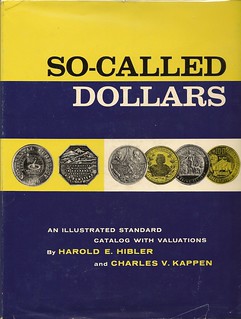 The standard reference on So-Called Dollars was written by Harold E. Hibler and Charles V. Kappen. An initial
listing was compiled by Richard D. Kenney and published by Wayte Raymond in 1953. Hibler began to compile an
update and Kappen joined the project later. The book was published by Robert Friedberg's Coin and Currency
Institute. American Numismatic Biographies has a fairly extensive write-up for Kappen.
The standard reference on So-Called Dollars was written by Harold E. Hibler and Charles V. Kappen. An initial
listing was compiled by Richard D. Kenney and published by Wayte Raymond in 1953. Hibler began to compile an
update and Kappen joined the project later. The book was published by Robert Friedberg's Coin and Currency
Institute. American Numismatic Biographies has a fairly extensive write-up for Kappen.
"Kappen, Charles V(aughn) Author (b. 5/25/1910 d. 8/25/1999) Born in Eureka Springs, Arkansas. Married Nora Elizabeth Wood January 15, 1931. They had a son and a daughter. Received B.A. from University of Arkansas in 1933 and M.A. from University of Wisconsin in 1947. Employed as a newspaper editor 1927 to 1942. Served in U. S. Army 1942 to 1946 and again 1951 to 1953. He rose to the rank of major and received the Bronze Star.
Assistant professor at University of Wisconsin 1946 to 1947, University of Tulsa (OK) 1947 to 1948, San Jose State College 1948 to 1951. Associate professor at San Jose State 1951 to 1959 and professor after 1959.
Resident of San Jose, California. Served on the board of California State Numismatic Association 1949 to 1962, as president 1963 to 1965 and as editor of Calcoin News, the club newsletter, 1949 to 1962. President of the San Jose Coin Club 1950 to 1951.
Author with Ralph Mitchell of Depression Scrip of the United States. Period of the 1930's in 1961. Author with Harold Hibler of So-Called Dollars in 1963. Author of California Tokens in 1976.
He died in San Jose, California."
The write-up for Harold Hibler is notably meager.
Hibler, Harold E. Author (b. 11/14/1904 d. 4/7/1968)
Born in Chester, Pennsylvania. Resident of Cambridge, Massachusetts (1960). Married September 21, 1935, to Doris H. Hopkins.
Harold Hibler was the son of Christopher Arthur Hibler (1873-1924) and Louise Isabelle Eisenbise Hibler (1874-1932).
Kappen joined the ANA as member 12047 in 1946. Hibler was not listed as an ANA member. He was a member and Trustee of the Boston Numismatic Society. He was a manager for Aetna Insurance in Boston and promoted to vice president in New York in 1963.
Hibler died in Broward County, Florida, and is buried with Doris at Mount Auburn Cemetery in Cambridge, Massachusetts.
Thanks again for the great research. I have the book and knew the names, but now we all have a better idea of the people behind the classic book. -Editor
To read the earlier E-Sylum article, see:
LOUIS ELIASBERG, SR. AND JR.
(https://www.coinbooks.org/v24/esylum_v24n33a16.html)
JOHN J. PITTMAN'S STATUE OF LIBERTY
BID
At the ANA show last week, Ron Guth gave me a heads' up about his upcoming article for CoinWeek on collector John J. Pittman's famous Statue of Liberty
bidding strategy. Here's an excerpt, but be sure to read the complete article online.
-Editor
Once upon a time, long before the COVID pandemic, and well before the internet took much of the business online, rare coin auctions were exciting events held in crowded rooms. Bidding was active, sometimes feverish, and members of the audience scanned the room and craned their necks to see who was bidding on special coins. To combat this unwanted scrutiny, bidders who wished to hide their activity relied on subtle moves that a good auctioneer would catch but which other bidders might not. After all, being too obvious could leave the bidder susceptible to competitors who might run up the price by bidding against them. In some cases, bidders arranged special signals with the auctioneer prior to the sale, including such subtle movements as a flick of a pen or the lifting of an eyebrow. Bidders routinely used small moves to obtain big coins as inexpensively as possible.
Yet for every rule, there's an exception.
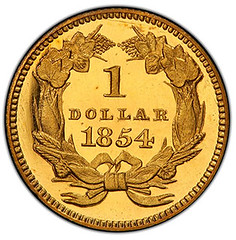 In the case of a very special coin, the rule-breaker was John Jay Pittman, who used a very big move to obtain a very small coin – a Proof 1854 Type Two Gold Dollar.
In the case of a very special coin, the rule-breaker was John Jay Pittman, who used a very big move to obtain a very small coin – a Proof 1854 Type Two Gold Dollar.
JJP's big move, as mentioned above, came in 1956, when he participated in Abe Kosoff's sale of the Thomas Melish collection. The small Proof 1854 Type II Gold Dollar that JJP stalked measured a diminutive 14.3 millimeters in diameter, but it was an extreme rarity and one of only a few examples known (the roster of four known Proofs is listed at the end of this article). The unusual technique used by JJP to obtain the Proof 1854 Gold Dollar is legendary and was the extreme opposite of the secretive bidding tactics used by other bidders at the time.
Dave Akers recounted the story under Lot 864 in his October 1997 sale catalog of the Pittman Collection, Part I:
As the lot was called, [JJP] walked to the front of the Florentine Room in the Claypool Hotel where the sale was taking place, turned and faced the crowd, his back to the auctioneer, and held up his arm to bid until the gavel was struck awarding him the lot at $525. During the bidding process, he intently stared at anyone who ‘dared' to bid against him. He stayed by the podium and repeated the procedure for the next lot … and several subsequent lots … He never wavered and never dropped his arm until he was recognized as the winning bidder in each instance. His actions earned him the nickname ‘The Statue of Liberty'.
To read the complete article, see:
A Big Move for a Small Coin: The Legend of John Jay Pittman's Statue of Liberty
Bidding Strategy
(https://coinweek.com/us-coins/a-big-move-for-a-small-coin-the-legend-of-john-jay-pittmans-statue-of-liberty-bidding-strategy/)
MORE ON MODEL HETTIE ANDERSON
Arthur Shippee passed along this New York Times article on Hettie Anderson, who modeled for sculptor Augustus Saint-Gaudens. Thanks! Here's an excerpt. -Editor
Her likeness has been rendered atop monuments and on gold coins. In Augustus Saint-Gaudens' towering, gilded equestrian sculpture honoring the Civil War general William Tecumseh Sherman at Grand Army Plaza in Manhattan, she represents the winged Greek goddess Victory striding in sandals ahead of his horse, one arm outstretched. But though her image can be found in multiple places around the United States, little is known about the model, Hettie Anderson.
What is known is that she surfaced in Manhattan in the 1890s, a light-skinned African American who joined its cultural scene after escaping bitter prejudice in the South. Sculptors and painters sought to portray what one newspaper article described as her creamy skin, crisp curling hair and warm brown eyes.
But Anderson received less media attention than some of her contemporaries, like the models Evelyn Nesbit and Audrey Munson, who became enmeshed in murder and sexual assault scandals. And over time Anderson's name became disassociated from the celebrated artists who hired her.
Her story remained in obscurity until the 1990s, when the researcher Willow Hagans, who is also Anderson's cousin, began publishing scholarly articles about her that Ms. Hagans wrote with her husband, William E. Hagans.
Anderson was born Harriette Eugenia Dickerson in 1873 in Columbia, S.C. Her mother, Caroline Scott, was a seamstress. Her father is listed in documents as Benjamin Dickerson.
Research, including findings by her cousin Amir Bey, shows that before the Civil War the government designated Anderson's family free colored persons
; they owned land and earned wages.
But the brutal enforcement of Jim Crow laws in the South and financial hardship eventually drove Anderson and many of her relatives northward. She and her mother rented an apartment in Manhattan on Amsterdam Avenue at 94th Street.
She was a favorite of Saint-Gaudens, who called her the handsomest model I have ever seen.
I need her badly,
he once wrote to a friend. In a draft of his memoir, he wrote that he depended on her stamina for posing patiently, steadily and thoroughly in the spirit one wished
— in his case in swirling togas atop monuments and on gold coins.
To read the complete article, see:
Overlooked No More: Hettie Anderson, Sculptors' Model Who Evaded Fame
(https://www.nytimes.com/2021/08/12/obituaries/hettie-anderson-overlooked.html)
To read the earlier E-Sylum articles, see:
HETTIE ANDERSON, MODEL FOR SAINT-GAUDENS
(https://www.coinbooks.org/v22/esylum_v22n02a20.html)
HETTIE ANDERSON: MODEL FOR SAINT-GAUDENS
(https://www.coinbooks.org/v22/esylum_v22n26a20.html)
CLASSICAL NUMISMATIC GROUP AUCTION 118
Here's the press release for the upcoming CNG fall sale. Some great coins here. -Editor
A Public and Online Sale
Closing Monday & Tuesday, 13-14 September 2021
Classical Numismatic Group is proud to present CNG Feature Auction 118, a Public and Online Sale closing Monday & Tuesday, 13-14 September 2021. CNG 118 will be held at the Holiday Inn Lancaster, 26 East Chestnut Street, Lancaster, PA 17603 in the Franklin Room (3rd Floor). This sale offers 1434 lots with a presale estimate of just over $2 million.
Our annual fall sale features Greek, Celtic, Oriental Greek, Central Asian, Roman Provincial, Roman Republican and Imperatorial, and Roman Imperial coinage. Additionally, there are featured selections of Byzantine, Early Medieval and Islamic, World coinage and medals, Siege and Necessity coinage, United States coins and medals, British coinage and medals, and a small selection of antiquities.
CNG 118 is highlighted by a number of collections and individual rarities, which make up the majority of coins on offer:
- Further Selections from the Dr. Jay M. Galst Collection
- Ancient Judaean & Related Coinage from the Father & Son Collection
- Ancient and United States Coinage from the Mercury Group and Sigmund Collections
- An Extensive Offering of Samarian & Judaean Coinage
- Very Rare Euhesperides Gold Stater of Ptolemy I
- The Archytas Collection of Kushan Coinage – Part II
- An Exceptional Zenobia Tetradrachm from Alexandria
- Roman Coinage from the Thomas A. Palmer and Trevor Hadley Collections
- A Very Rare Civil War Gold Aureus of C. Cassius Longinus
- Published Gold Aureus of Pertinax
- An Extremely Rare Gold Dukat of Holy Roman Emperor Karl VI
- Selections from the Michael Cassick Collection of Siege and Emergency Coins
- British Milled Gold from the Mildenhall Collection
- Charles I Triple Unite
- 1729 George II Five Guineas – East India Company Issue
Catalogs for CNG 118 have been mailed to our active mailing list and bidding is open on the site. Some of the individual highlights from CNG 118 are:
Lot 43 - BRUTTIUM, Rhegion.
Circa 420-415/0 BC. AR Tetradrachm (24.5mm, 17.04 g, 1h). Facing head of lion / Laureate head of Apollo right; olive sprig to left, PHGINOS to right. Herzfelder 65e (D37/R54 – this coin); HN Italy 2494; SNG ANS 658 (same dies); de Luynes 796 (same dies). Toned, some roughness and traces of find patina on reverse. VF. High relief.
Estimated at $5,000
From the Father & Son Collection, purchased from Art Ancient, 2015. Ex Stack's Bowers & Ponterio 185 (5 August 2014), lot 215; Conte Alessandro Magnaguti Collection (Part I, Santamaria, 12 October 1949), lot 251; J. Bougerol Collection (Bourgey, 7 June 1909), lot 117.
Lot 178 - ATTICA, Athens.
Circa 515-510 BC. AR Drachm (13.5mm, 3.95 g). Wappenmünzen
type. Hindquarter of horse standing right / Quadripartite incuse square, divided diagonally. Seltman pl. IV, ?–?; Svoronos, Monnaies, pl. I, 26–8; HGC 4, 1618; BMC Central Greece, p. 136, 1–3; Pozzi 1510. Old cabinet tone, granular and slightly rough surfaces, small spot of smoothing on obverse. VF. Very rare.
Estimated at $7,500
Ex Judy Day Frink Collection (Classical Numismatic Group 115, 17 September 2020), lot 130 (hammer $10,000), purchased from Victor England; Jules Desneux Collection (Hess-Leu 49, 27 April 1971), lot 155; Naville V (18 June 1923), lot 1961.
Lot 532 - JUDAEA, Jewish War.
66-70 CE. AR Shekel (22mm, 14.17 g, 12h). Jerusalem mint. Dated year 3 (68/9 CE). Omer cup; Y[ear] 3
(date, in Hebrew) above, Shekel of Israel
(in Hebrew) around / Sprig of three pomegranates; Jerusalem the holy
(in Hebrew) around. Deutsch 29 (O4/R26); Meshorer 202; Kadman 20; Hendin 1361; Bromberg I 69; Shoshana I 20207–9; Sofaer 29; Spaer 174. Attractively toned. Near EF.
Estimated at $5,000
From the Father & Son Collection. Ex Heritage 3030 (5 January 2014), lot 23820.
Lot 614- PTOLEMAIC KINGS of EGYPT. Ptolemy I Soter.
305/4-282 BC. AV Stater (17.5mm, 7.12 g, 1h). Euhesperides mint. Struck early 290s BC. Diademed head right, wearing aegis around neck / ?TO?EMAIOY BASI?EOS, Alexander, holding thunderbolt in right hand and reins in left, standing left in chariot drawn by four elephants left; branch in exergue. CPE 275; Svoronos 101; Naville 239 (same dies as illustration); Zervos –; SNG Copenhagen –; BMC 1 = Bement 1822 (same dies); Consul Weber 4463 (same dies). Minor die wear on obverse, double strike on reverse. EF. Very rare, eleven noted by Naville, of which four are in museums; only two in CoinArchives.
Estimated at $20,00
From the same dies as Heritage 3048, lot 32052, which hammered at $80,000.
Lot 660 - INDIA, Kushan Empire. Vima Kadphises.
Circa AD 113-127. AV Dinar (20mm, 7.96 g, 12h). Bilingual series. Main mint in Baktria. BACI??YC OOH MO KA?FICHC, diademed and crowned half-length bust of Vima Kadphises left on clouds, holding mace-scepter in right hand; tamgha to right / Maharajasa rajadirajasa sarvaloga isvarasa mahisvarasa hima kaphthisasa tradara[sa] in Kharosthi, ithyphallic Siva standing facing, head left, holding trident in right hand and resting left arm on bull Nandi behind, who is standing right with head facing; Buddhist triratana (Three Jewels) to left. Bopearachchi, Premiers Série V, 7 = Triton XI (8 January 2008), lot 36 (this coin); MK 1 var. (bust right; same rev. die [R1]); ANS Kushan –; Donum Burns 73 var. (same). Lightly toned, traces of deposits in devices. VF. Second known.
Estimated at $20,000
From the Archytas Collection. Ex Triton XI (8 January 2008), lot 368.
Lot 938 - The Republicans. C. Cassius Longinus. Spring 42 BC. AV Aureus (19.5mm, 7.84 g, 12h). Military mint (Smyrna?); M. Aquinus, legate. Diademed head of Libertas right; M • AQVINVS • LEG • LIBER (TA)S around / Tripod surmounted by the cortina and two laurel-branches; fillet on each side; C • CASSI upward to left, IMP • upward to right. Crawford 499/1; CRI 218; Bahrfeldt 57; Calicó 64 (same obv. die as illustration); Sydenham 1303; BMCRR East 72; Biaggi 42 (same obv. die); RBW 1760 (same dies). Usual light die rust on obverse. NGC photo certificate 6156409-001, graded MS, Strike: 4/5, Surface: 3/5. Very rare; only 10 examples were known to Crawford, 7 of which are in museums. Estimated at $30,000
Ex Triton X (8 January 2007), lot 545
Apparently Unique Variety of an Extremely Rare Type
Lot 990 - Clodius Macer.
Usurper, AD 68. AR Denarius (17mm, 3.66 g, 6h). Carthage mint. Group VI, early summer to early autumn. ROMA downward on right, S C below, helmeted head of Roma right / L • CLODI MACRI counterclockwise, trophy, with crossed spears behind two oval shields. RIC I 31 var. (all with clockwise rev. legend); Hewitt Group F/4 (unlisted dies); RSC 9; BMCRE p. 287, note *; BN –. Old cabinet tone, some scratches under tone. VF. An apparently unpublished variety of an extremely rare and interesting type.
Estimated at $15,000
Ex Numismatica Ars Classica 80 (20 October 2014), lot 69; Áureo & Calicó 241 (8 February 2012), lot 39; Leo Benz Collection (Lanz 94, 22 November 1999), lot 270, purchased from M. Dürr in Carouge, Switzerland, November 1985
Clodius Macer, legatus propraetore of Africa Proconsularis, rose in rebellion against Nero during the Civil War in the spring of AD 68. Like most of his coins, this denarius does not bear his portrait. Only in his latest issues does Macer have his portrait placed on his coins. He includes S C (senatus consulto) on his denarii, most likely to show that his revolt was not against the senate, but against Nero. Clodius Macer did not strike coins in his name until after the death of Nero. Nero committed suicide on 9 June AD 68, thus, the dating of this coin to later in the rebellion, perhaps sometime in early summer to early autumn. All of Macer's coins are of rather crude style, an indication of the lack of skilled die engravers and the haste at which they were produced. By October, Galba had solidified his power in Rome and ordered Macer's execution.
K.V. Hewitt in The Coinage of L. Clodius Macer
in The Numismatic Chronicle, 1983 says that there are a remarkable number of types and varieties, several known by only single specimens
(p. 64). All of Macer's coins are extremely rare, with fewer than 85 coins of all types known.
Lot 1224- Michael I Rhangabe, with Theophylactus.
811-813. AV Solidus (19mm, 4.43 g, 6h). Constantinople mint. • mIXA HL bASIL?', crowned and draped facing bust of Michael, holding globus cruciger in right hand and akakia in left / T?OFVLA CtOS ??SP´, crowned facing bust of Theophylactus, wearing loros, holding globus cruciger in right hand and cross-tipped scepter in left; X at end of legend. DOC 1a.1-4 (same obv. die); Füeg 1.B; SB 1615. Lustrous, a couple of faint scratches, slight weakness of strike at edge. EF. Well centered. Rare.
Estimated at $10,000
A high court official, Michael Rhangabe seized power when Nicephorus I was killed in battle. Michael raised his eldest son Theophylactus as co-emperor and reversed the iconoclast policies of his predecessor. In 812, he recognized Charlemagne as emperor of the West in return for Venice returning to Byzantine control; the Venetians, however, ignored the edict. Early in 813, Michael mounted a campaign against the Bulgarians, but they routed his army. In the aftermath, Michael abdicated and named the general Leo V as his successor. Michael took monastic vows and died peaceably as a monk 30 years later. His coinage in all metals is very rare.
Lot 1266- AUSTRIA, Holy Roman Empire. Karl VI.
Emperor, 1711-1740. AV Dukat (21.5mm, 3.46 g, 12h). Prague mint. Dated 1733. Karl standing right, holding scepter and globus cruciger / Crowned double-headed eagle, wings spread, holding sword and scepter; crowned and collared coat-of-arms on breast. CNA 210/e-3; Herenik 105; KM 725 (unlisted date); Friedberg 47 (Bohemia, unlisted date); Aurea Numismatika 96 (5 September 2020), lot 46 (hammer 220,000 CZK); Macho & Chlapovic 23 (30 April 2020), lot 124 (hammer €14,000). Minor deposits. Good VF. Extremely rare – only two examples in CoinArchives, this finer.
Estimated at $5,000
Lot 1381 - STUART. Charles I.
1625-1649. AV Triple Unite (44.5mm, 27.31 g, 1h). Declaration type. Oxford mint; im: plume. Dated 1642. (plume) CAROLVS : D : G : MAG : BRIT : FRAN : ET : HI : REX, crowned and armored half length bust left, holding sword with both hands; plume to right / · EXVRGAT : DEVS : DISSIPENTVR : INIMICI, (continuing into inner field) RELIG : PROT/ LEGI : ANG/ LIBER : PAR on continuous scroll; above, three plumes above · III ·; I642 below. Beresford-Jones dies III/L1; Brooker 834 (same dies); Schneider 286–7 (same obv. die); North 2382; SCBC 2724. Some edge marks, fields burnished both sides, ghosted on arm and 2 of date. Toned. Good VF. Strong portrait. Rare, especially from these dies.
Estimated at $40,000
Ex Baldwin's FPL (Summer 2015), no. BH023 (priced at £65,000).
Printed catalogs for CNG 118 are now available. To order the catalog, please call our U.S. office at (717) 390-9194. Catalogs have been mailed to customers on CNG's active mailing list. Prospective bidders may also view the virtual catalogs at https://cngcoins.com/photos/CNG_Links/CNG_118_Virtual_Catalog.PDF. The sale can be viewed online at auctions.cngcoins.com, sixbid.com, and numisbids.com.
In addition to CNG Feature Auction 118, CNG will also feature over 1000 lots from many of the same collections listed above in their Electronic Auction 500, closing one week later on Wednesday, 22 September 2021, from 10AM ET (U.S.). Bidding for CNG Electronic Auction 500 will begin on 1 September 2021.
CNG is currently accepting consignments for future auctions sales. Please contact the firm for further details and consignment deadlines.
For further details and any additional information, please contact CNG, LLC at:
Classical Numismatic Group, LLC
P.O. Box 479
Lancaster, PA 17608-0479
Telephone: (717) 390-9194
Fax: (717) 390-9978
Email: cng@cngcoins.com
NUMISMATIC NUGGETS: AUGUST 22, 2021
Here's a selection of interesting or unusual items I came across in the marketplace this week. Tell us what you think of some of these. -Editor
17TH CENTURY SUFFOLK FARTHING, BURY ST EDMUNDS, THOMAS BULL, A WAGON
17thCentury Token, Suffolk,Bury St Edmunds, Thomas Bull, Farthing, undated, a wagon left, legend surrounding, *THOMAS* BVLL* IN*, rev. T*B at centre, pierced cinquefoil above and below, legend and beaded border surrounding, * ST EDMONDS. BVREY*, weight 0.71g (Norweb 2466; Boyne 35; B.W. 44). Some porosity, good fine with a clear wagon.
Boyne notes Thomas Bull was Churchwarden of St James Parish in 1673.
Provenance:
Ex Philip D. Greenall Collection, Baldwin Auction 16, 30th October 1997, lot 269 part.
A crude early token from the stock of Sovereign Rarities Ltd. -Editor
To read the complete item description, see:
17TH CENTURY SUFFOLK FARTHING, BURY ST EDMUNDS, THOMAS BULL, A WAGON
(https://www.sovr.co.uk/17th-century-suffolk-farthing-bury-st-edmunds-thomas-bull-a-wagon-fm19846.html)
U.S. $20 Double Eagle Spiel Mark Counter, Brass
Countermarked "H. L. Dickinson"
Large host coin. Very unusual c/s host coin type, possibly unique. The coin appears to have circulated.
Issuer: H. L. Dickinson
Place of issue: Unknown
Date of issue: Unknown
Occupation/Business: Unknown
I used to collect U.S. merchant counterstamps by the undertype, assembling a nice little type set of coins. While counterstamps are found on all sorts of U.S. coins, circulating foreign coins, and even some tokens, I've never seen a counterstamped spiel mark (game counter). Found in the eBay listings of Bob Merchant. -Editor
To read the complete lot description, see:
Spiel Mark Counter (US $20 Double Eagle Pattern), Counterstamp "H. L. Dickinson"
(https://www.ebay.com/itm/133849477703?hash=item1f2a0cf247:g:KTEAAOSw9FthGTQj)
"1846" (1861) Bache Coast Survey Life Saving Medal. By Franklin Peale. Julian LS-4. Bronze. Proof-63 BN (NGC).
34 mm.
Provenance: Ex Eric P. Newman Numismatic Education Society; Heritage's Long Beach Tokens & Medals Signature Auction of June 2016, lot 98629.
The plainest medal I've ever seen. Such tiny lettering! From a Stack's Bowers August 31st sale. -Editor
To read the complete lot description, see:
"1846" (1861) Bache Coast Survey Life Saving Medal. By Franklin Peale. Julian LS-4. Bronze.
(https://auctions.stacksbowers.com/lots/view/3-SPVDX/1846-1861-bache-coast-survey-life-saving-medal-by-franklin-peale-julian-ls-4-bronze-proof-63-bn-ngc)
1897 Tennessee Centennial Exposition. Official Medal. HK-274. Rarity-4. Brass. MS-63 (PCGS).
33 mm.
From the August 31st Stack's Bowers offerings. Another very plain reverse, but a nice obverse view of the Mint. -Editor
To read the complete lot description, see:
1897 Tennessee Centennial Exposition. Official Medal. HK-274. Rarity-4. Brass.
(https://auctions.stacksbowers.com/lots/view/3-SPVD7/1897-tennessee-centennial-exposition-official-medal-hk-274-rarity-4-brass-ms-63-pcgs)
Engraver Ron Landis is well-known to collectors for his work reproducing early American coins and teaching people about early minting techniques in his work with the Gallery Mint. He is renowned for his carved coins as well, such as this interpretation of Ye Olde Mint
carved on the reverse of a 1992 American Eagle 1-ounce silver bullion coin.
It is based on the painting Ye Olde Mint by Edwin Lamasure, and the Landis carving is a faithful representation of the early Philadelphia Mint, with the number of the engraving, the artist's initials and the date of the engraving noted on the piece.
This great item from the collection of Len Augsburger was recently sold by Stack's Bowers. Great parallel to the Tennessee Expo piece. From a Coin World article by Steve Roach. -Editor
To read the complete article, see:
Market Analysis: Mint scene on American Eagle
(https://www.coinworld.com/news/us-coins/market-analysis-mint-scene-on-american-eagle)
WAYNE'S AUGUST 2021 ANA DIARY, PART TWO
In no particular order, here are some more notes and photos from last week's ANA World's Fair of Money show in Rosemont.
1933 President's Proclamation
I saw this great ephemera item at Fred Weinberg's table, but he was away and I didn't get a chance to ask him about it. Very neat item.
Fred's retiring and closing up his office. Good luck, and happy trails! He was an early and very steady E-Sylum supporter, and he'll be missed, here and on the show circuit.
SS Central America Bell Ringing
From the press release:
"The 268-pound bell from the fabled Ship of Gold, the SS Central America that sank in 1857, will be publicly displayed along with some of the recovered California Gold Rush treasure at the American Numismatic Association's 2021 Chicago World's Fair of Money®, August 10-14 (www.WorldsFairofMoney.com). The bell that helped to confirm the identity of the historic vessel was brought up from the Atlantic Ocean in 1988 and has not been exhibited in public for three decades.
"The SS Central America represents the greatest American treasure ever found and its story is important to our history. This priceless treasure will be rung twice each day at booth #122 during the ANA convention in remembrance of the 425 passengers and crewmembers who perished when the legendary ship sank 164 years ago, said Dwight Manley, managing partner of California Gold Marketing Group which owns the bell and recovered sunken treasure.
"The ringing of the bell ceremony will be conducted daily 30 minutes after the show opens to the public and again at 3 pm."
Bob Evans checks his watch awaiting the time to begin.
Bob opens with a discussion of the ship, its treasure, and the significance of its loss.
David Lisot films the event.
I had to stop Bob when I saw him crossing the bourse floor at one point during the show. I wanted to tell him that the bell appeared to me in a dream a few nights earlier. I dreamed they'd lent me the bell, and I had it on display in my home office. And I was walking around showing it to family members and telling them about its significant. In my dream it was only about a foot in height, easily lifted in two hands. Not quite true in reality - the thing weighs more than me.
To read the earlier E-Sylum article, see:
SS CENTRAL AMERICA BELL TO RING AT ANA
(https://www.coinbooks.org/v24/esylum_v24n29a14.html)
Shanna Schmidt
Thor's Hammer
I asked to see the hammer and John prodly displayed it. There's a smile behind that mask.
Ben and Abe
Right up front at the entrance were tables and backdrops for Abe Lincoln and Ben Franklin impersonators Dennis Boggs and Pat McBride.
Even the shoeshine guy had fun clowning with these guys. I ended up having breakfast with Pat sans costume Thursday morning. He had a great analogy - Ben and Abe are to coin shows what the team mascots are to baseball - they rouse the crowd, cheer up the fans, pass out T-shirts and have a little fun. And these guys know their numismatics. Abe's got a great story about Samuel Chase and the greenbacks raising money for the Civil War, and Ben knows all about the colonial paper money he printed and the medals with his image. Kids and collectors of all ages love them.
Remember, these good people depend on donations to cover expenses. They don't get monetary support from the shows they visit. We've publicized their fundraising campaigns before.
At the show I spoke to former Civil War Numismatic Society president Susan Trask Gingrich. I also reached out to officers of some other clubs. With the help of their boards and members (and E-Sylum readers as well), I think we can arrange a steadier source of funding to keep this party going. It's great for numismatics in general and the hobby should show its support. Please contact me if you're willing to help. Even small one-time donations are greatly appreciated.
To read the earlier E-Sylum article, see:
FUND DRIVE: GET ABE & BEN TO ROSEMONT
(https://www.coinbooks.org/v24/esylum_v24n13a16.html)
And More...
It was great to see so many old and new friends at the show. For several events I just put my phone away to be in the moment and converse, so I don't have photos of everything and everybody. I missed out on visiting with Doug Winter, Pierre Fricke and other E-Sylum supporters because they were so busy with customers at their tables.
A couple times I ran into Kellen Hoard and Abby Zechman. I also had brief conversations with Ron Guth, Craig Sholley, Jeff Rock, Victor England, sculptor Heidi Wastweet, Pittsburgh area collectors Larry Korchnak and Tom Uram, and many others. What a whirlwind show!
To read the earlier E-Sylum articles, see:
WAYNE'S AUGUST 2021 ANA DIARY
(https://www.coinbooks.org/v24/esylum_v24n33a20.html)
WAYNE'S AUGUST 2021 ANA DIARY: EXHIBITS
(https://www.coinbooks.org/v24/esylum_v24n33a21.html)
WAYNE'S AUGUST 2021 ANA DIARY: NBS MEETING
(https://www.coinbooks.org/v24/esylum_v24n33a22.html)
WAYNE'S AUGUST 2021 ANA DIARY: TYRANT EXHIBIT
Last week I discussed the regular ANA exhibit area, but didn't get a chance to mention the fabulous Tyrant collection exhibit. Here are a few photos. -Editor
From the earlier press release:
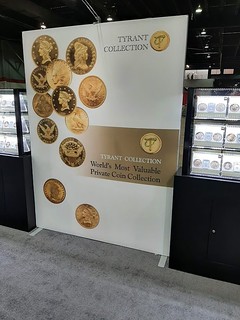 "For the first time ever, the public will be able to see the superb quality type set of more than 400 U.S. coins from the acclaimed Tyrant Collection (TheTyrantCollection.com) at the Chicago World's Fair of Money (WorldsFairofMoney.com), August 10-14. Ranging from 1793 to 1964, many of these historic coins are the finest known of their kind.
"For the first time ever, the public will be able to see the superb quality type set of more than 400 U.S. coins from the acclaimed Tyrant Collection (TheTyrantCollection.com) at the Chicago World's Fair of Money (WorldsFairofMoney.com), August 10-14. Ranging from 1793 to 1964, many of these historic coins are the finest known of their kind.
"The centerpiece of the extraordinary exhibit will be the legendary King of Siam proof set which was originally presented in 1836 by the U.S. State Department to the King of Siam (now Thailand) as a gift on behalf of President Andrew Jackson.
"This is the first time in over a decade that the full, fabled King of Siam set will be publicly displayed, and we're delighted the set – in addition to the superb U.S. type coins – will be at the World's Fair of Money," said Kim Kiick, executive director of the ANA. "The unique King of Siam set will be accompanied by the leather-covered wood box that contained the presentation coins given 185 years ago to Rama III, the King of Siam. The ship's log from the USS Peacock on that important diplomatic mission will also be displayed."
"The legendary set's coins range in denomination from an 1834 Classic Head copper half cent to an 1804 "Plain 4" Heraldic Eagle gold $10. A renowned Class I 1804 Draped Bust silver dollar graded PCGS PR67 is also included.
"The entire, incomparable exhibit, entitled 'U.S. Type Coins from The Tyrant Collection,' is insured for $100 million," said Ira Goldberg, CEO of Goldberg Coins and Collectibles, Inc. in Los Angeles, California. He is among those who have assisted the coins' owner in building the collection of U.S. world and ancient coins that is often described as the world's most valuable rare coin collection in private hands."
The exhibit cases were amazing, well worthy of the fabulous collection they displayed. Every panel was well-lit and illustrated with large full-color photographs of the coins. Excellent system - museum quality.
Although advertised as a collection beginning with the year 1793, this gorgeous 1792 Half Disme snuck in there. I was with researcher and author Pete Smith who pointed this out.
The coins of the King of Siam set were long ago slabbed for sale, but it's great to have them all together with the original case.
To read the earlier E-Sylum articles, see:
TYRANT COLLECTION U.S. TYPE COIN ANA EXHIBIT
(https://www.coinbooks.org/v24/esylum_v24n23a07.html)
WAYNE'S AUGUST 2021 ANA DIARY: EXHIBITS
(https://www.coinbooks.org/v24/esylum_v24n33a21.html)
VIKING COIN HOARD SEIZED
Dick Hanscom passed along two articles about a seized Viking coin hoard. Thanks! -Editor
Two men have been charged after a hoard of Viking coins worth nearly £1m was found by police.
The coins and silver ingot, of major historical significance, were seized from properties in County Durham and Lancashire in 2019.
Craig Best, 44 and of Bishop Auckland, and 73-year-old Roger Pilling, of Loveclough, are accused of conspiracy to convert criminal property.
Durham Police said the haul contained coins of Alfred the Great of Wessex and his less well-known contemporary, Ceolwulf II of Mercia.
King Alfred inflicted a defeat on the Vikings in AD 878, and experts believe the coins belong to an undeclared hoard consistent with the location of the Viking army at that time.
When the coins were recovered in 2019, Dr Gareth Williams, curator of early medieval coins and Viking collections at the British Museum, described the collection as a "nationally important hoard" which could "add significantly" to the understanding of the political history of England.
To read the complete articles, see:
Two men charged over £1m Viking coins hoard
(https://www.bbc.com/news/uk-england-tyne-58268540)
Two men aged 44 and 73 are charged after £1million Viking coin hoard is discovered in police raid
(https://www.dailymail.co.uk/news/article-9909189/Two-men-aged-44-73-charged-Viking-coin-hoard-worth-1-million-police-raid.html)
1994 VIETNAM VETERANS MEMORIAL DOLLAR
Gerry Tebben passed along this note relating to the 1994 Vietnam Veterans Memorial dollar. Thanks. -Editor
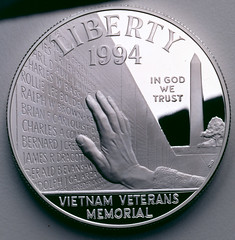 Joseph L. Galloway, co-author with Lt. Gen. Harold G. Moore of "We Were Soldiers Once and Young" has died. The 1992 book (and 2002 movie) is about the Nov. 16-17 Vietnam battle of Ia Drang. The names of those who died there are on Panel 3E of The Wall. Part of that panel - Lines 66 through 79 -- is on the obverse of the 1994 Vietnam Veterans Memorial dollar.
Joseph L. Galloway, co-author with Lt. Gen. Harold G. Moore of "We Were Soldiers Once and Young" has died. The 1992 book (and 2002 movie) is about the Nov. 16-17 Vietnam battle of Ia Drang. The names of those who died there are on Panel 3E of The Wall. Part of that panel - Lines 66 through 79 -- is on the obverse of the 1994 Vietnam Veterans Memorial dollar.
Of 21 discernible names on the commemorative silver dollar, 17 men died at Ia Drang. Sixteen of those 17 died during the 16-hour battle in and near a football-field size clearing called Landing Zone Albany. The book details the battle in minute-by-minute detail. It's chilling to read the book while holding the coin. Charles W. Bass, for example, was the first man to die at Landing Zone Albany about 1:10 p.m., Nov. 17, 1965. "I hear Vietnamese talking," Bass said moments before the attack began, Moore wrote.
Years ago I put together a PowerPoint about the coin. Len Augsburger just uploaded it to the Newman Numismatic Portal.
Here's a link to the Chicago Sun Times obituary for Galloway:
https://chicago.suntimes.com/entertainment-and-culture/2021/8/18/22631604/joe-galloway-dead-journalist-chronicler-of-vietnam-war-was-79-obituary-books-movies
To read the presentation on NNP, see:
The Vietnam Veterans Memorial Dollar
(https://nnp.wustl.edu/library/book/604913)
COIN STRESS AT COIN LAUNDRIES
The Wall Street Journal had an article this week about the continuing coin shortage, which has hit laundries hard. -Editor
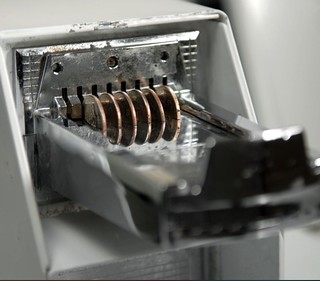 The night before she was scheduled to serve jury duty, Kuromi Hendricks realized the clothes she planned to wear were dirty. She couldn't find the 12 quarters required for a wash and dry at her Boston apartment building.
The night before she was scheduled to serve jury duty, Kuromi Hendricks realized the clothes she planned to wear were dirty. She couldn't find the 12 quarters required for a wash and dry at her Boston apartment building.
By 11 p.m., desperation took hold. She hopped in a $10 Uber to the only place she knew was open and might have spare change—a 24-hour cafe with a couple of arcade games. Not wanting to use the business just for their coins, she ordered a lemonade, asked for about $5 in quarters, played a few rounds of pinball, and headed home to wash.
They've gotten me out of a pinch a couple times with quarters,
Ms. Hendricks said.
The scarcity of spare change—brought on as people leaned on digital transactions and fewer coins circulated—has pushed the quarter-dependent to extremes. Many have spent hours trekking across their cities in search of coins they used to easily procure from local bank branches. One couple hauled four loads of laundry across several states where they could use a relative's machines. And in some buildings, the yearning for clean sweatpants has resulted in neighbors forging closer bonds.
The flow of change first slowed in the spring of 2020. Restaurants and retailers posted signs encouraging digital and credit card payments and even asked people to exchange spare coins. The problem eased toward the end of 2020 but made a comeback in March as businesses were preparing for an influx of cash transactions after vaccination rates ramped up. Around that time, coin requests from banks began to outpace deposits, according to the Federal Reserve, which provides cash to banks through its regional banks.
Now there isn't enough coin to go around, and the central bank is limiting orders on pennies, nickels, dimes and quarters.
Demand for machines equipped with digital payment capabilities has roughly doubled since the start of the pandemic, Mr. Miller said. The most popular digital payment method is an app that users load money for laundry and connects to laundry machines via Bluetooth. Washers and dryers that accept credit or debit cards are less common because they require real-time Internet connections, which can be difficult to guarantee in the basements where many laundry rooms are located.
To read the complete article (subscription required), see:
Coin Shortage Creates Loads of Laundry Stress
(https://www.wsj.com/articles/coin-shortage-creates-loads-of-laundry-stress-quarters-change-thefed-11629209465)
JAPANESE MAYOR BITES OLYMPIAN'S GOLD MEDAL
In the well-that-really-bites department, a Japanese Olympic gold medalist will have her medal replaced after her hometown mayor bit it. -Editor
An Olympic gold medalist will have her medal replaced less than a week after the end of the Tokyo Games. For a very unusual reason.
Tokyo 2020 organizers announced Thursday that Miu Goto, a relief pitcher on Japan's champion softball team, will receive a new gold medal after Takashi Kawamura, the mayor of her hometown in Nagoya, bit her medal at an event to celebrate her win, according to Reuters.
The bite did not appear to damage the medal, but still caused a minor scandal in Japan for Kawamura's flouting of COVID-19 protocols and perceived disrespect for Goto's prize. Biting Olympics is a common practice, dating back to its use as a quick test of a gold coin's authenticity, but it's a practice you typically see only among the athletes that won them.
The social media backlash against Kawamura was swift, with the term "germ medal" trending soon after the event.
Even Japanese car giant Toyota, which sponsors the Goto's Toyota Red Terriers club team, released a statement condemning Kawamura...
To read the complete article, see:
Japanese softball player to have gold medal replaced because her hometown mayor bit it
(https://sports.yahoo.com/japan-gold-medalist-softball-miu-goto-nagoya-mayor-replacement-022855574.html)
LOOSE CHANGE: AUGUST 22, 2021
Here are some additional items in the media this week that may be of interest. -Editor
Aaron Oppenheim passed along this story about plans to carry an ancient coin to space. Thanks. -Editor
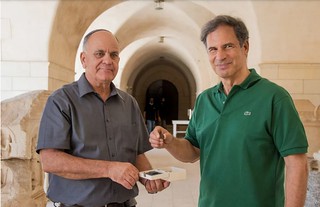 Israeli astronaut Eytan Stibbe will take an ancient coin dating to the Bar Kokhba revolt with him to outer space, the Israel Antiquities Authority (IAA) said Thursday.
Israeli astronaut Eytan Stibbe will take an ancient coin dating to the Bar Kokhba revolt with him to outer space, the Israel Antiquities Authority (IAA) said Thursday.
As part of the Rakia Mission to the International Space Station,
Stibbe said, I will be taking with me a bag filled with items that have a special meaning to me. It was clear to me that one of these items will be a symbol of Jewish history.
The Bar Kokhba revolt was an uprising of Jews in Judea against the Roman Empire from 132 to 136 AD, led by Simon Bar Kokhba. Year two of the liberty of Israel
is imprinted into the coin, in defiance of Roman sovereignty.
Stibbe said the coin, "minted with the palm tree and vine leaves," represented his connection to the land of Israel, his love of the country and desire of Israelis to gain independence, following a visit at the IAA's Dead Sea scrolls laboratory in Jerusalem.
To read the complete article, see:
Israeli astronaut to take ancient Bar Kokhba-era coin to outer space
(https://www.i24news.tv/en/news/israel/society/1629419999-israeli-astronaut-to-take-bar-kochva-era-coin-to-outer-space)
Thanks also to Dick Hanscom for these additional articles. -Editor
To read the complete articles, see:
Israeli astronaut to take 1,900-year-old Bar Kochba revolt coin to space
(https://www.timesofisrael.com/israeli-astronaut-to-take-1900-year-old-bar-kochba-revolt-coin-to-space/)
From Judean desert to space: Ancient coin to fly with Israeli astronaut
(https://www.jpost.com/archaeology/from-judean-desert-to-space-ancient-coin-to-fly-with-israeli-astronaut-677185)
Aaron Oppenheim passed along this one as well - a Coin World piece about Israel's new 5 shekel coin. Thanks, -Editor
 Israel will soon issue a new circulating commemorative 5-new-Israeli-shekel coin to celebrate the sacrifice of healthcare workers during the COVID-19 pandemic.
Israel will soon issue a new circulating commemorative 5-new-Israeli-shekel coin to celebrate the sacrifice of healthcare workers during the COVID-19 pandemic.
The coin is dedicated in gratitude to the medical personnel in Israel for their contribution and struggle for the lives and health of Israel's citizens during the COVID-19 pandemic,
according to an announcement from the Bank of Israel.
A design competition among 15 graphic designers in Israel was used to choose the obverse design of the coin. The Public Committee for the Planning of Banknotes, Coins and Commemorative Coins, chaired by retired Supreme Court Justice Jacob Turkel, chose three finalists, and Bank of Israel Governor Amir Yaron selected the winning design, by artist Eitan Alon.
Similar coins have been issued in various countries, including Italy, France, and Egypt.
To read the complete article, see:
Israel plans a new circulating 5-shekel coin
(https://www.coinworld.com/news/precious-metals/israel-plans-a-new-circulating-5-shekel-coin)
On the Coin Update site, Michael Bugeja has an article about the flood of "junk" coins in online auctions. -Editor
Each week for my Coin Update column I view 100+ online auctions on Proxibid, HiBid.com, and other venues, spending less and less time because of spurious auctioneer practices or junk auctions. On some sites, I may spend 10 seconds. Others I simply ignore.
Several sellers see maximum bids or shill bid, lying about lots being won onsite,
only to feature them again in the next auction — a dead giveaway of shenanigans. Some set opening bids at retail prices, transforming an auction into an online coin shop. Many auctioneers peddle common coins flooding the market that have little collector or hobbyist values.
We're talking about the latter today.
Here's a list of the top 10 junk lots that you will see in almost every online coin auction.
To read the complete article, see:
Junk coins flood online auctions
(http://news.coinupdate.com/junk-coins-flood-online-auctions/)
FEATURED WEB SITE: BUFFALO NICKEL CLUB
This week's Featured Web Site is the Buffalo Nickel Club.
The Buffalo Nickel Club's mission is to guide, inform, and provide expertise as the complete Buffalo Nickel resource. Please feel free to browse the site where you will find an extensive archive of information. And, don't forget to visit the forum where the experts hang out!
https://buffalonickelclub.org/

